The Himalayan Birch is a tall, elegant tree known for its striking white bark. Over time, this bark naturally peels away, revealing fresh white layers and noticeable lenticels underneath. The tree forms a broad, pyramidal crown with upward-reaching branches. This clean, upright canopy is a popular choice for architectural landscaping and looks particularly effective when planted in trios, either in open spaces or along fence lines. They make an excellent focal point, especially in winter gardens.
Often confused with Silver birch, the Himalayan Birch has dark green, ovate leaves and yellow-brown catkins in spring. The leaves turn a vibrant yellow in autumn. This hardy tree is suited to most soil types and tolerates most conditions.
One of the main differences between the Himalayan and Silver Birch is in their bark. Himalayan Birch bark peels in thin, papery sheets and remains bright white, while Silver birch bark develops black, rugged fissures at the base with age. The Himalayan Birch also tends to be slightly shorter at maturity and has a more upright, formal canopy.
1. Trees for Natural Summer Screening: Our favourite candidates for privacy and shade!
2. Top 10 Trees for Winter Interest – Part One
3. What trees are best for new build gardens?
4. Top 10 Native Hedging Plants
5. What are the best plants & trees for your soil type?
Whether you’re looking to add seasonal colour, encourage wildlife, or create a natural defensive barrier, native plants have plenty to offer. Explore our top 10 native hedging plants below to find the perfect fit for you!
Common dogwood is a familiar sight in British hedgerows and brings year-round interest to any landscape. It produces clusters of white flowers in spring, followed by dark blue fruits later in the season. Its green leaves turn vibrant shades of yellow, orange, and red in autumn, while green-tinged red stems provide striking colour through autumn and winter. This medium-sized, fast-growing deciduous shrub thrives in most soil types and performs especially well in wetter sites, making it a reliable and versatile choice for native hedging.
Field maple is a hardy, deciduous shrub and one of the toughest native hedging species in the UK. Commonly found in hedgerows, it brings vibrant seasonal colour to any landscape. It is a standout choice in mixed planting schemes, especially when its foliage turns brilliant shades of gold and red. These leaves have a distinctive palmate shape, adding both texture and character. Yet another reason why it’s such a popular choice!
Hawthorn has long been a key component in mixed native hedging and field boundaries throughout the UK. This fast-growing, deciduous tree features maple-like leaves, clusters of white flowers in spring, and vibrant red berries in autumn. The berries not only add seasonal interest but also serve as an important food source for birds and other wildlife. Hawthorn also responds well to regular clipping, making it ideal for dense, tidy boundary hedges. Its sharp thorns further enhance its value as a natural, defensive barrier.
Blackthorn is a tough, native shrub known for both its seasonal interest and natural security. In early spring, it produces small white flowers, followed by oval-shaped green leaves. By autumn, the plant is heavy with blue-black berries, known as sloes, which are edible and often used in preserves or drinks. As its name suggests, Blackthorn is armed with hard, sharp thorns. When clipped into a hedge, it creates a dense, impenetrable barrier, making it an ideal choice for boundary planting and intruder deterrence.
Hazel is a familiar and versatile feature of British hedgerows. This small, native tree is often coppiced and cultivated for its edible nuts, hazelnuts, which appear in abundance in autumn. Its ability to be easily coppiced makes it ideal for traditional hedgerow management. When cut back, Hazel grows as a multi-stemmed tree, perfect for filling gaps and thickening hedge lines.
Dog rose is a fast-growing, native shrub. Often seen in British mixed hedgerows, it is a great choice for gardens that support biodiversity.
In spring, it produces large pink or white flowers with a sweet scent. Bees and butterflies love these blooms. By autumn, bright red hips appear and add vibrant colour. Birds feed on the hips through the colder months. Dog rose also grows long, arching branches covered in sharp thorns. These create a natural barrier and help keep out unwanted visitors.
Hornbeam is widely planted across the UK. Known for thriving in clay soils, but growing well in others too, gardeners often use its full form to create structure and screening. You can plant it as a specimen tree or shape it into a striking hedge. As a native species, it also plays a key role in British woodlands and landscapes.
Hornbeam has the added benefit of being ‘semi-evergreen’. Its bright-green, ovate leaves turn orange-brown in autumn. Many of them stay on the tree well into winter, adding seasonal interest and shelter for wildlife.
Spindle is a fantastic plant for autumn interest. It has small red fruits that split open to reveal vivid orange seeds. This striking display brings colour and contrast to any garden. It also has mid-green leaves that turn brilliant red in autumn. The combination of red foliage and bright fruits makes it especially eye-catching. Spindle is a fast-growing, deciduous shrub or small tree. It grows well on all free-draining soils and thrives on chalk. Once established, it’s a very tough and reliable plant.
Common buckthorn forms dense, thorny thickets that are hard to penetrate. These provide excellent shelter for a wide range of wildlife. In spring, it produces small yellow-green flowers. By autumn, red berries appear and ripen to black. Its oval, dark green leaves are glossy and turn yellow before they fall. Buckthorn adds seasonal interest and creates valuable habitat in any wild or natural-style planting.
Common holly is a slower growing, medium-sized evergreen with dark, glossy, spiky leaves and red berries in the autumn. Holly is particularly shade tolerant and suited to clay soils.
1. How Do I Pre-Order Bare Root Plants?
2. Pre-Order Bare Root Hedging Plants for the Planting Season
3. Bare Root Planting Tips: How to establish a native hedge on a tight budget
4. Native Hedging Plants: King & Co Website
Laurels are a popular choice for garden privacy, and for good reason. Known for their hardiness and dense foliage, they’re ideal for screening out unwanted views, especially from overlooking neighbours. At King and Co, we offer both Cherry Laurel and Portuguese Laurel in tree form.
Both our Cherry Laurel and Portuguese Laurel trees feature a clear stem of around 1.8 metres, making them ideal for creating a raised hedge above fence height.
Unlike traditional hedging that has branches from the ground up, standard trees keep the lower area clear. This higher canopy allows for effective screening while preserving more space at ground level, perfect for smaller gardens or tighter planting areas.
Cherry laurel. A very fast-growing and dense plant. To keep it neat and encourage thicker growth, it should be pruned twice a year. Without regular trimming, the foliage can become open and leggy.
Portuguese laurel. Slower growing but keeps its shape with little effort (it often needs just one trim per year).
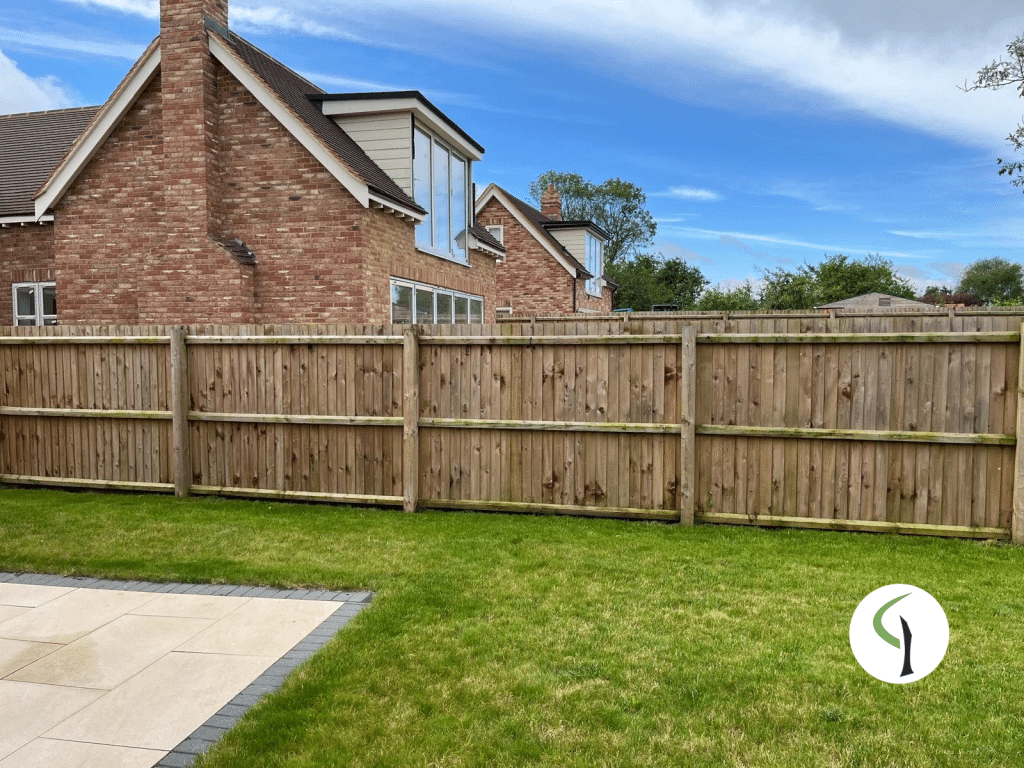
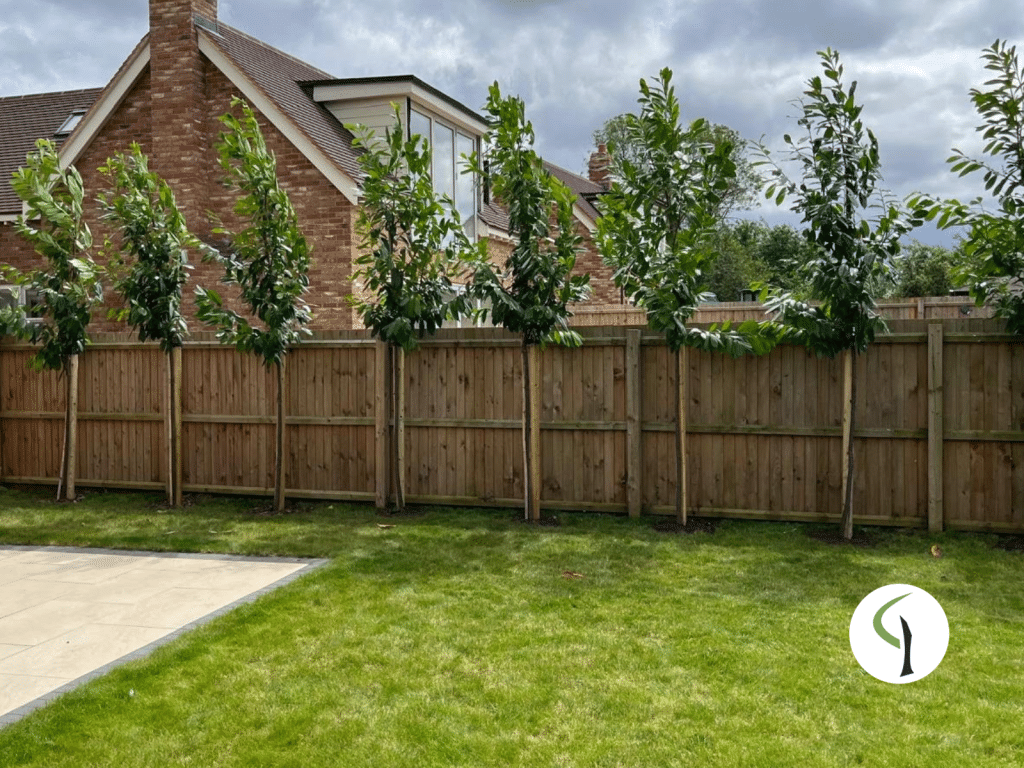
1. Tree Care Tips: How to plant, water and maintain your trees
2. Pleached Photinia Red Robin: A Stunning Screening Solution
3. What trees are best for new build gardens?
4. Our Guide to Pleached Trees
5. Visit Our Nursery to Pick your Own Trees!
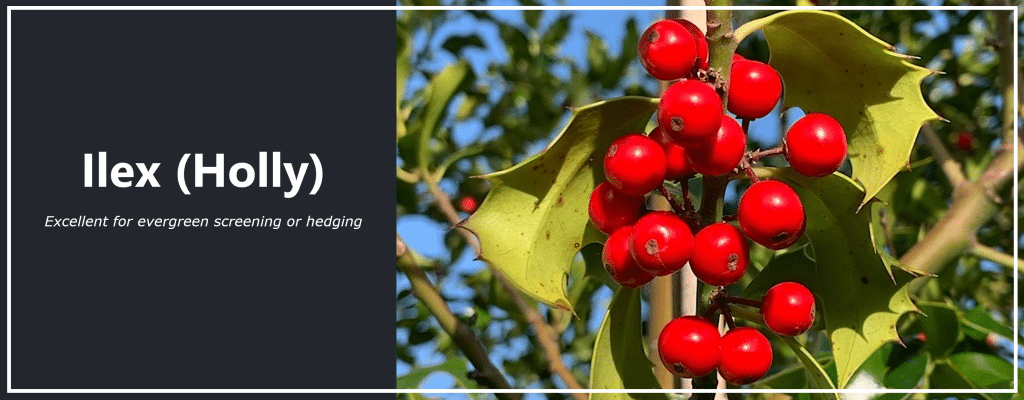
While holly is often associated with the festive season and its decorative uses, it also makes a fantastic privacy screen for your garden. If you’re looking for a natural and effective way to enhance your privacy and define boundaries, consider planting holly trees for screening!
While our native holly (Ilex aquifolium) boasts iconic red berries, these only appear on female plants that have been pollinated. This has led to a surge in popularity for varieties like Ilex ‘Nellie R. Stevens’.
A self-pollinating hybrid, ‘Nellie R. Stevens’ produces abundant red berries in autumn regardless of the plant’s sex. Additionally, its leaves are smoother and less spiky than those of the native holly, further enhancing its appeal.
We currently have the ‘Nellie R. Stevens’ holly available in both standard and bush form (these standards are ideal for evergreen screening). We also offer a smaller, P9 Common holly (Ilex aquifolium) with the distinctive spiny leaves. These are excellent for creating a striking and effective barrier.
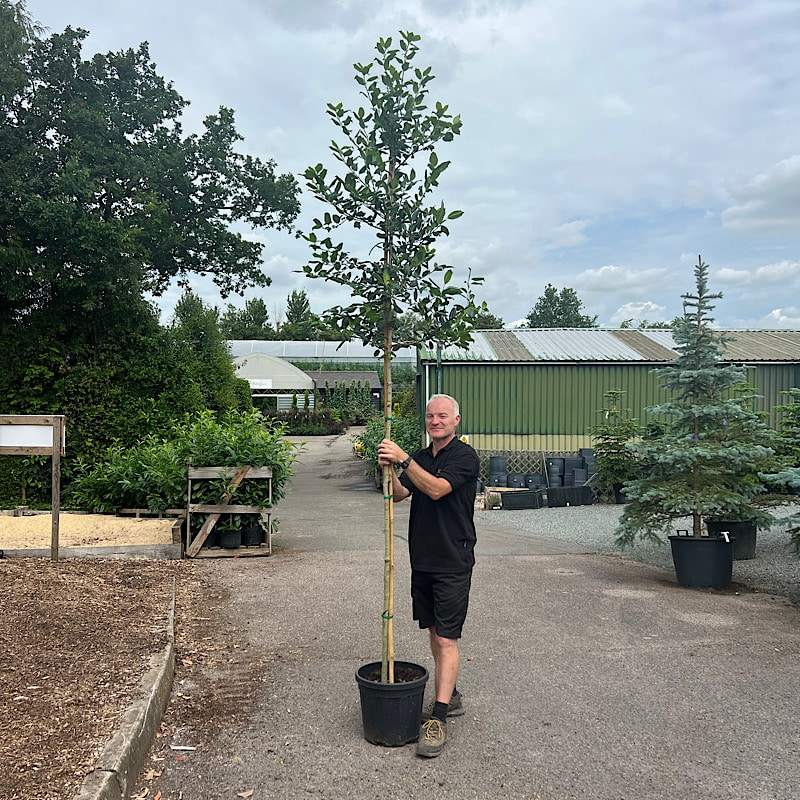
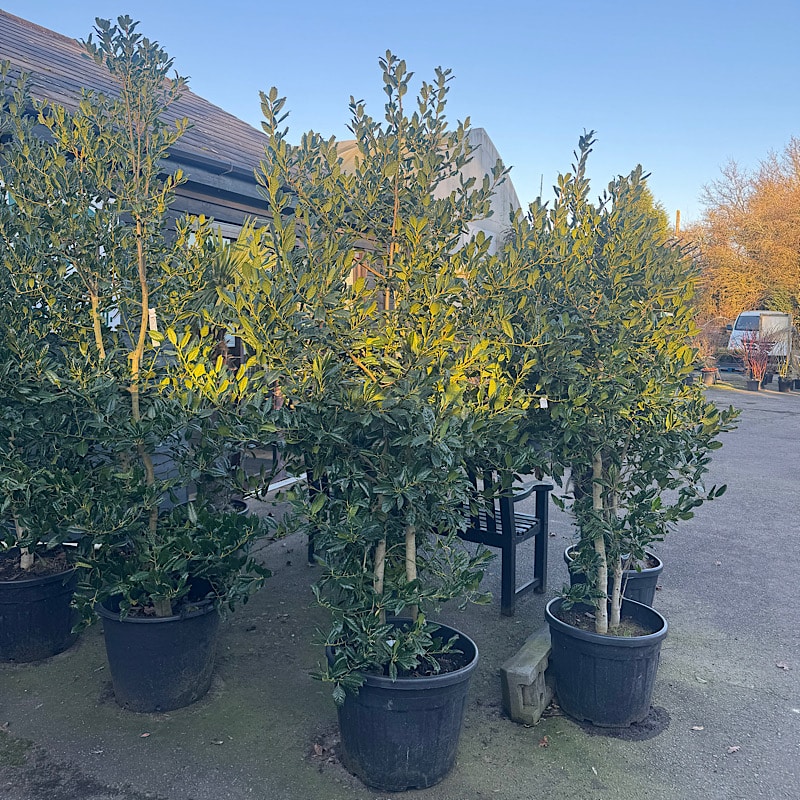
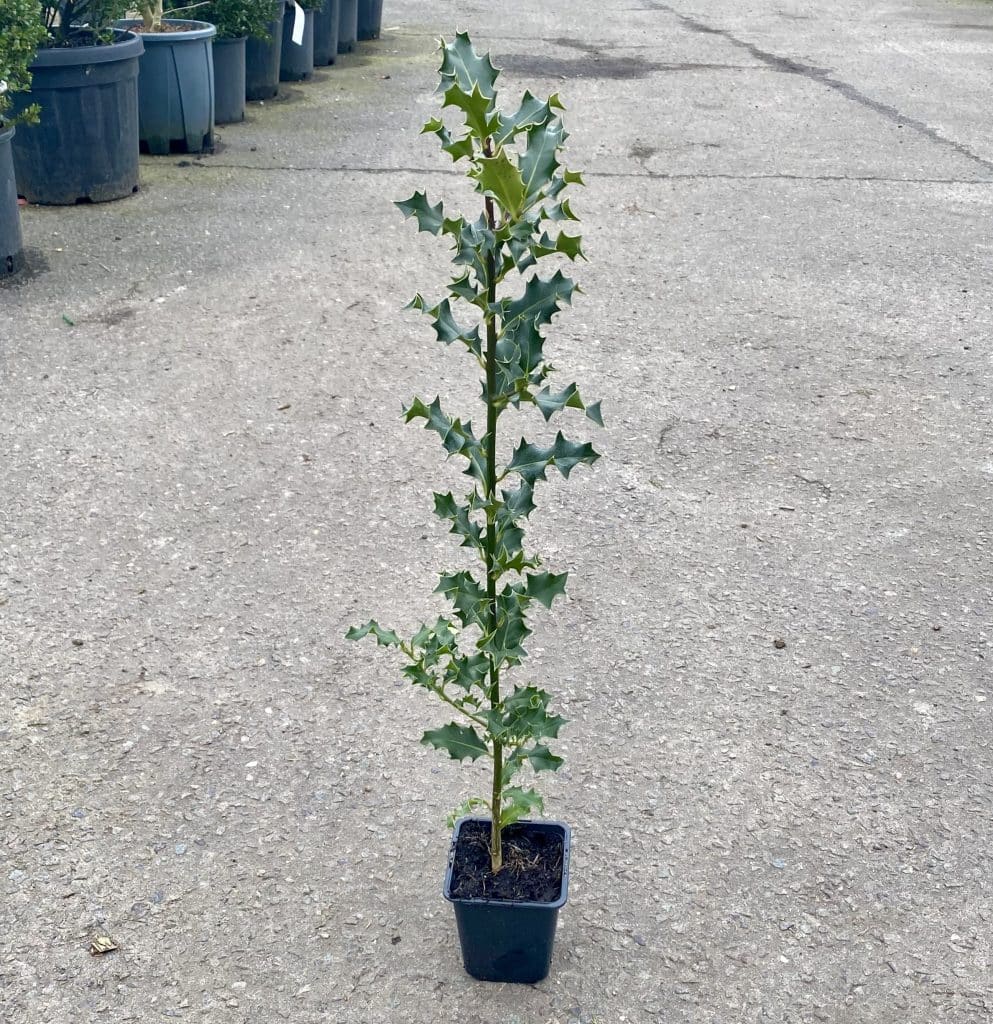
We also stock Ilex castaneifolia, also known as Chestnut Leaf Holly. This holly variety features unusually large, serrated leaves that resemble those of the Sweet Chestnut, hence its name. This dense foliage provides year-round coverage, offering a natural privacy solution for your garden.
Both the standard Ilex ‘Nellie R. Stevens’ and Ilex castaneifolia trees have 1.5-1.8m clear stems and a bushy head of foliage that sits above a standard 6ft fence panel to create a “stilted hedge” effect. This provides excellent privacy without taking up valuable garden space.
You could plant these trees 1.2-1.5m apart to create a uninterrupted screen above the fence line or you could strategically placed one tree to block a specific unwanted view.
1. Tree Care Tips: How to plant, water and maintain your trees
2. Pleached Photinia Red Robin: A Stunning Screening Solution
3. What trees are best for new build gardens?
4. Our Guide to Pleached Trees
5. Visit Our Nursery to Pick your Own Trees!
Once again, King and Co are proud to support the Father Christmas Experience at Marsh Farm. For the 2019 event, the Tree Nursery provided a handpicked selection of festive trees. These included Christmas trees, conifers, pines and evergreen oaks.
Christmas Trees. These are often the heart of any festive display. That’s why selecting the right variety and size matters. At our nursery in Rayne (Essex), you’ll find a wide range of trees in stock. Options include Norway Spruce, Blue Spruce, and Nordman Fir available in sizes from 4 to 7 feet.
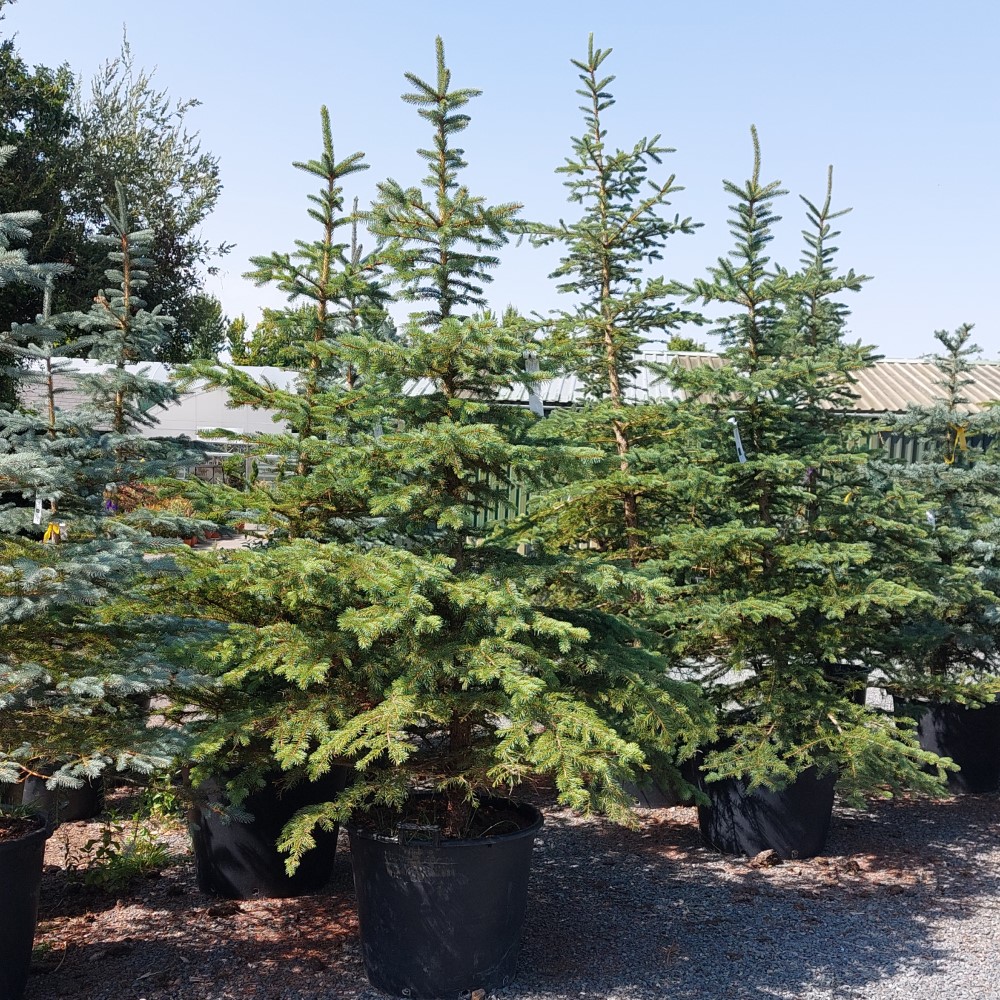
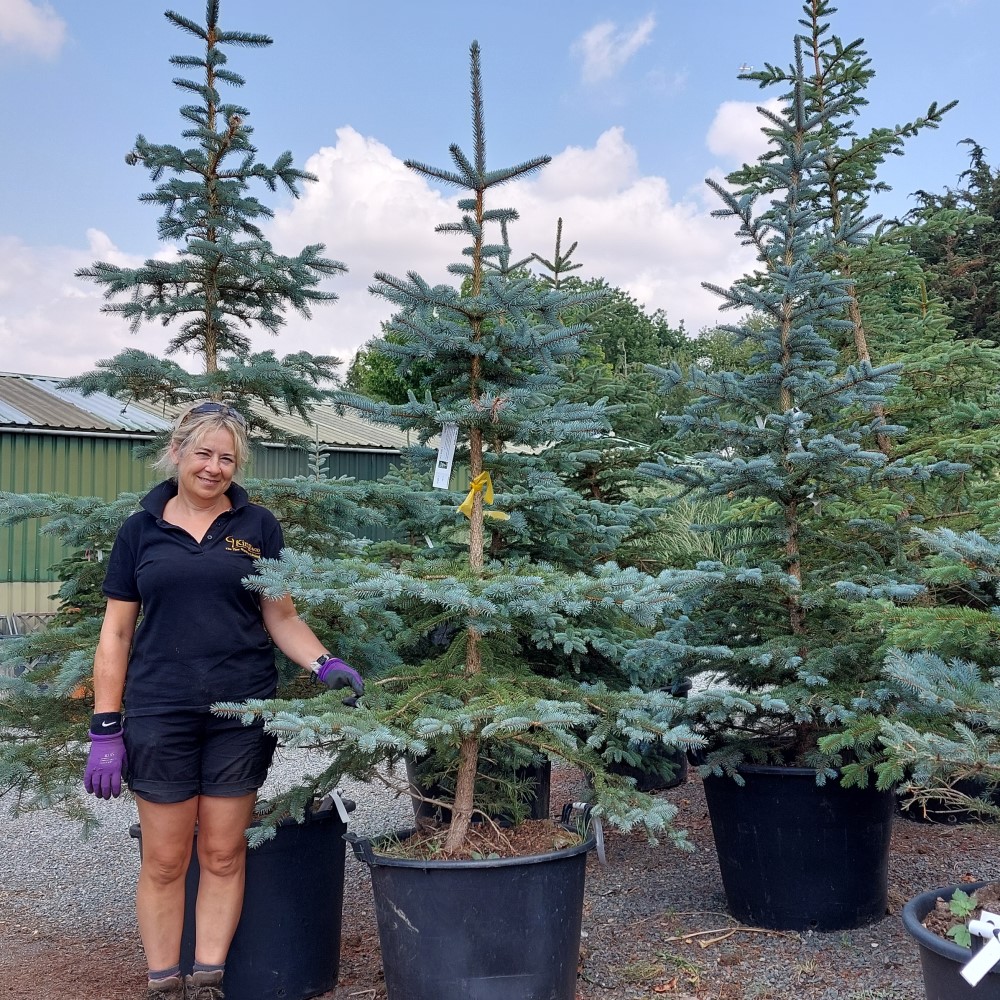
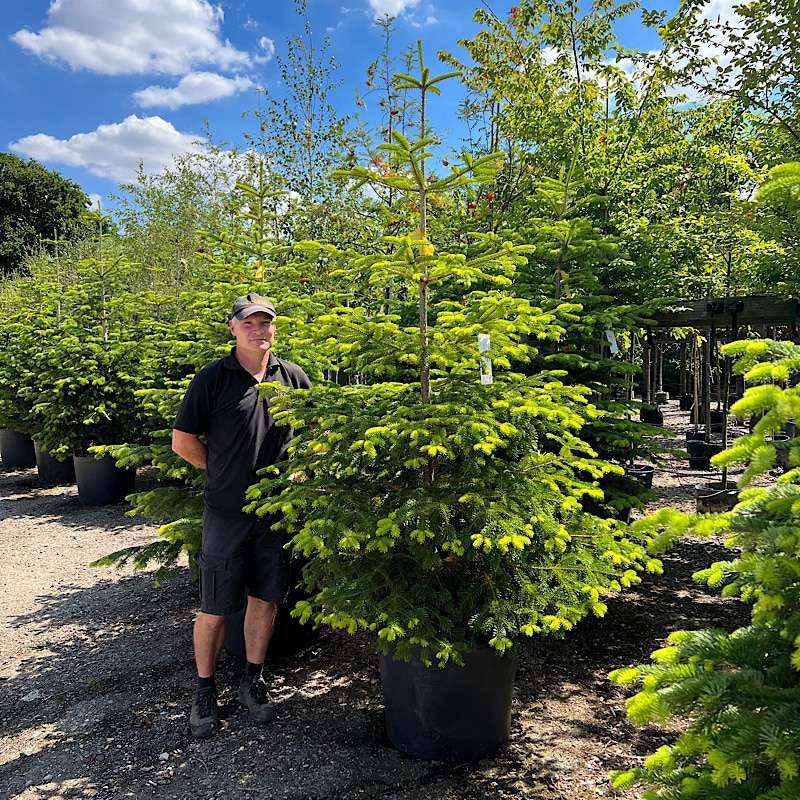
Norway Spruce. This is the classic Christmas tree. With short, light green needles and a naturally bushy shape, it brings traditional charm. It’s also the tree famously displayed in Trafalgar Square each year, gifted by Norway. Keep it well watered to reduce needle drop.
Blue Spruce. Known for its striking steel-blue needles, the Blue Spruce stands out with its silvery, glaucous foliage. It grows symmetrically and has a dense branch structure. This tree comes from the Rocky Mountains and needs regular watering to keep its needles intact.
Nordmann Fir. One of the most popular choices today. It’s dense, bushy, and holds its needles longer than many other types. It is often referred to as the ‘non drop Christmas tree’.
To learn more about the Father Christmas Essex Experience click here.
1. Tree Care Tips: How to plant, water and maintain your trees
2. Pleached Photinia Red Robin: A Stunning Screening Solution
3. What trees are best for new build gardens?
4. Our Guide to Pleached Trees
5. Visit Our Nursery to Pick your Own Trees!
At King & Co we take pride in offering british-grown evergreen hedging stock, including Cherry and Portuguese laurel!
We stock British-grown Cherry and Portuguese laurel in both tree and shrub form.
Screening Trees. Our laurel standards have clear stems around 1.8m tall. You can plant them in a row to create a screen above a 6ft fence or as a standalone tree to block unwanted views. Cherry laurel is fast-growing so it needs pruning twice a year to stay neat and dense. Portuguese laurel is slower growing but keeps its shape with little effort (it often needs just one trim per year).
We also stock 1/2 standard Portuguese laurel. These trees have shorter stems, around 90–110cm tall. Ideal for creating a raised hedge above a low wall or fence, they also work well as specimen trees to add height and interest in smaller gardens.
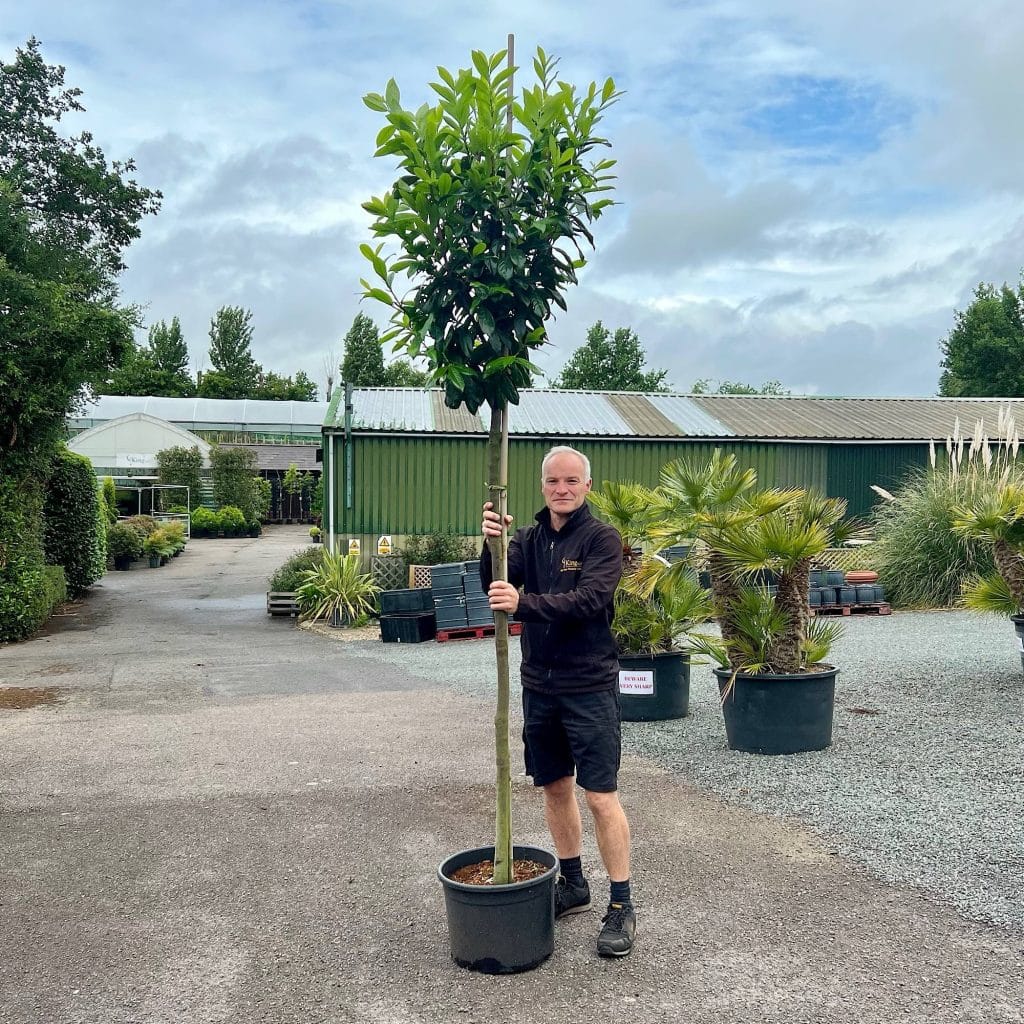
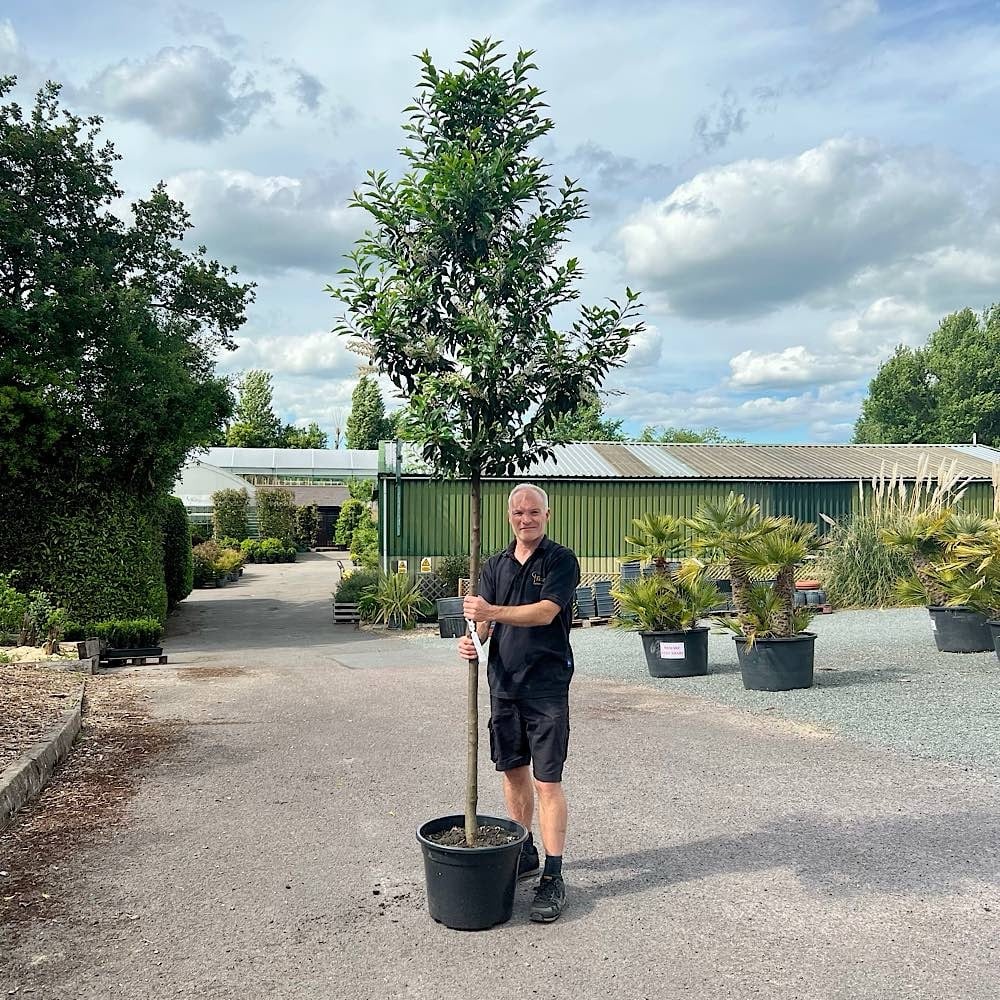
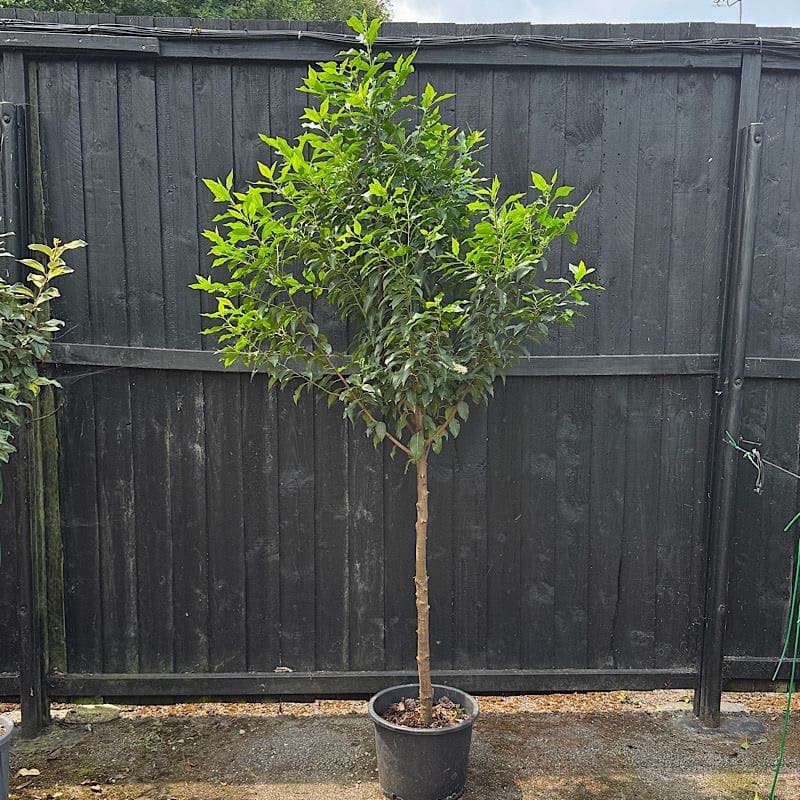
Hedging plants. These shrubs are branch from ground level and form a natural screen from the base up. They work well for defining borders.
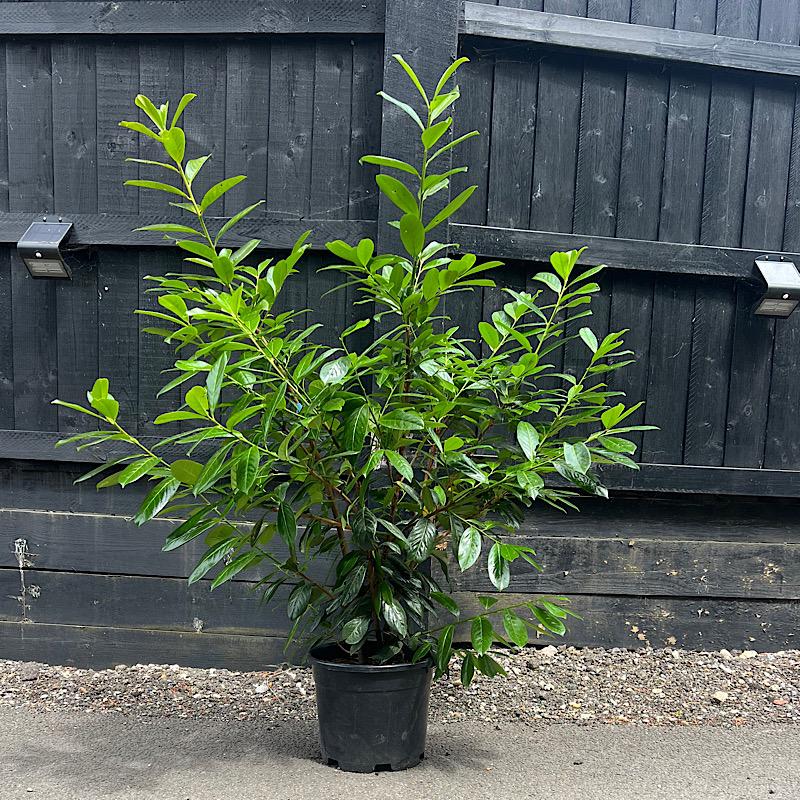
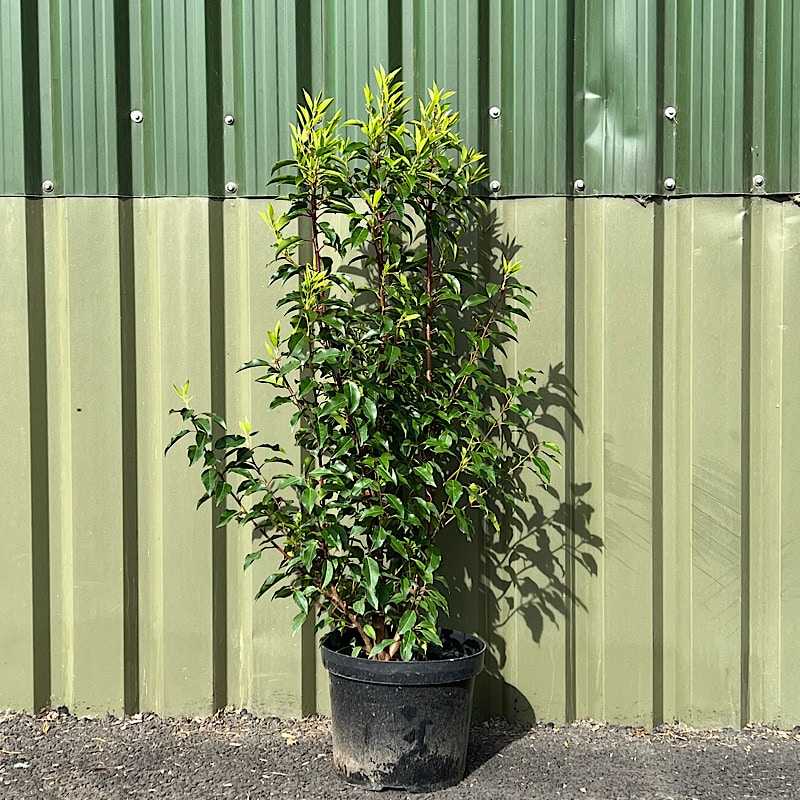
Take a look at this video for more information on Laurel hedging.
1. Tree Care Tips: How to plant, water and maintain your trees
2. Pleached Photinia Red Robin: A Stunning Screening Solution
3. What trees are best for new build gardens?
4. Our Guide to Pleached Trees
5. Visit Our Nursery to Pick your Own Trees!
At King and Co, we specialise in screening trees that grow above the fence line. These trees are perfect for blocking views from overlooking windows or hiding unsightly areas next door or at the bottom of the garden. Some of our most popular choices include Laurel, Ligustrum and Magnolia, but we have no hesitation in ranking the Photinia Red Robin as our number 1 screening tree for creating garden privacy!
Photinia ‘Red Robin’ is great for screening because it grows quickly and has dense, evergreen foliage. It also has bright red new leaves that appear in spring and mature to green, adding colour and interest to the garden. This new growth appears in flushes through spring and summer.
You can grow Photinia as a hedge or a standard tree. Many people choose the tree form for screening. It has a clear stem of about 1.8 metres (6 feet) and a full, leafy head. This creates a raised hedge that provides privacy without taking up much ground space.
Pleached trees offer another stylish way to add garden privacy. At King & Co, we stock Photinia Red Robin, Cherry laurel and Hornbeam in pleached form. All of which have a clear stem of 1.8-2m, with their branches trained onto a bamboo frame to offer instant coverage above a fence.
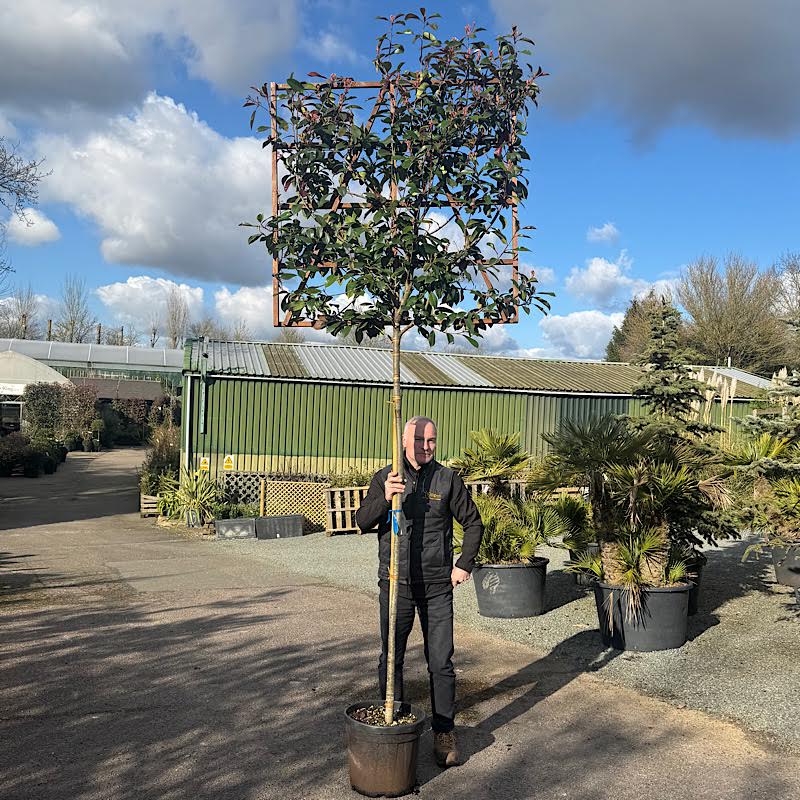
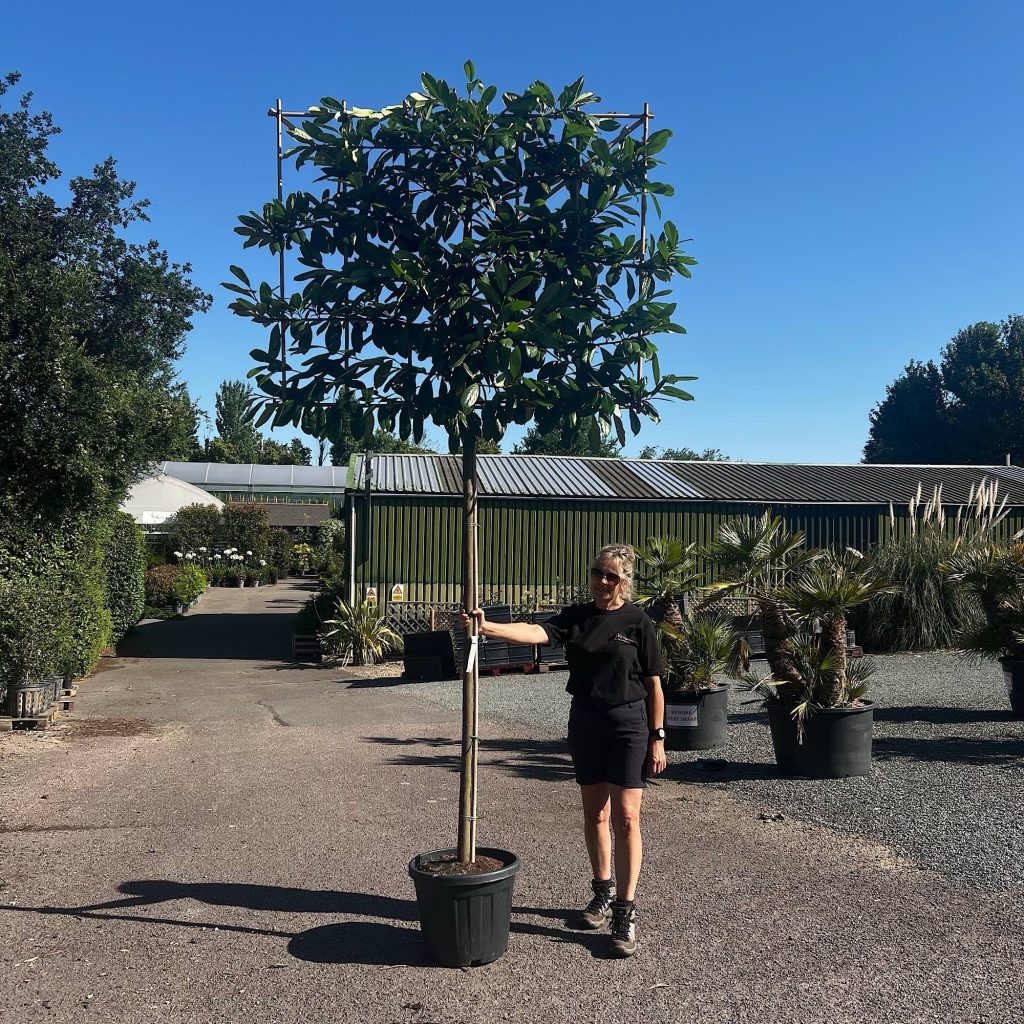
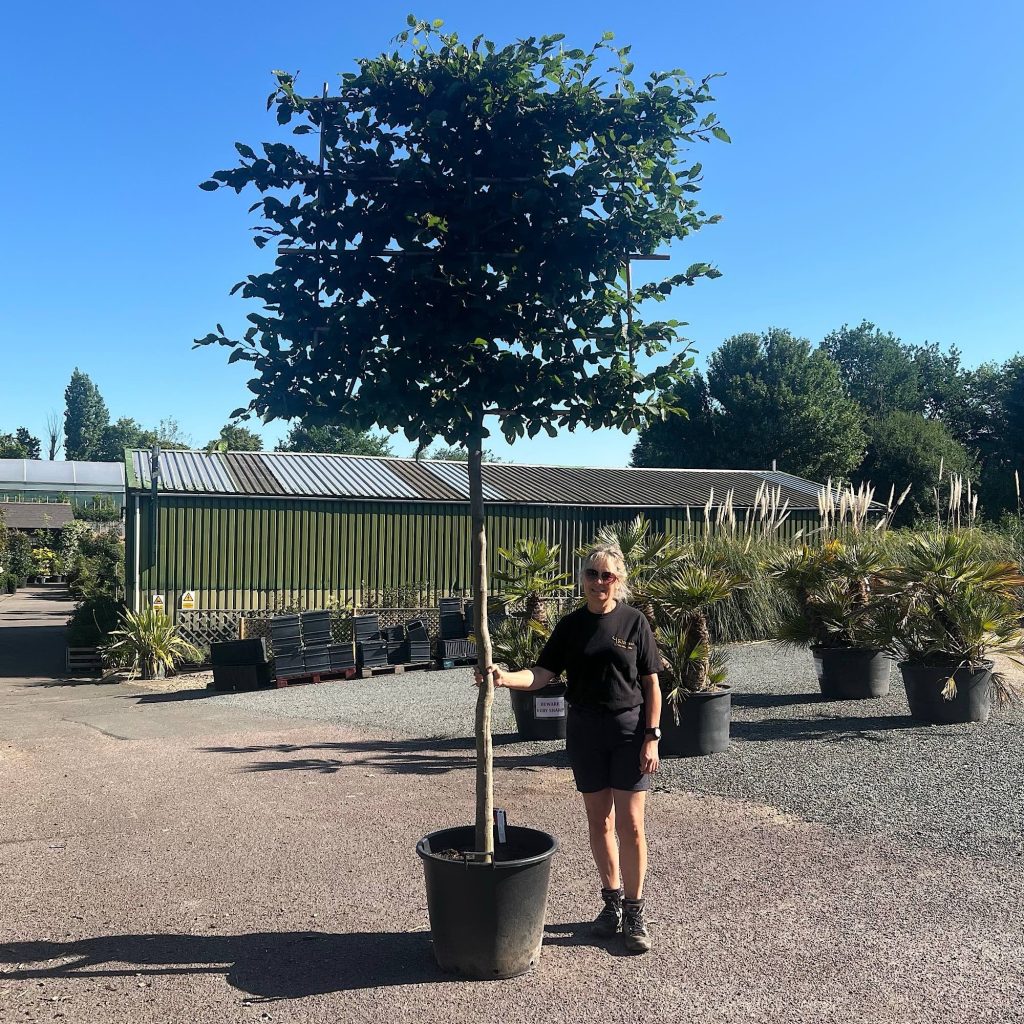
1. An Expert Guide to Photinia Red Robin
2. How can I use Photinia Trees For Screening?
3. Why is Photinia Red Robin so popular?
4. What is Photinia ‘Red Robin’?
Bare root accessories like rabbit guards, deer guards, and tree shelters help to increase the survival rate of young plants by protecting them from animal damage in winter. This bare root season, we’re excited to offer a new, biodegradable guards too!
Our new biodegradable guards offer a more sustainable way to plant by reducing plastic use. Made from non-toxic materials, they break down into water, CO₂, and biomass. You can leave them on the forest floor after use without harming the environment. Even better, their production creates up to five times less carbon than oil-based plastic spirals.
The guards create a micro-climate by wrapping around the young plant. Their faint green tint lets in enough light for growth while softening harsh sunlight. The green also blends into the surroundings. They block spray from reaching the plant and help hold warmth and moisture.
These spiral guards are quick to install and expand as the tree grows. They need little to no maintenance and are highly affordable. They fully degrade in four to five years.
Check out the video below for a step-by-step video guide on how to install bare root plants and their accessories!
Common Dogwood (Cornus sanguinea). A native shrub found in many British hedgerows. It adds interest all year round with spring flowers, red autumn leaves, and bright winter stems.
Field maple (Acer campestre). A tough, native deciduous tree. It’s one of the hardiest species used in hedging.
Hawthorn (Crataegus monogyna). Also known as Quickthorn or May Blossom, it is a fast-growing deciduous, native tree that has always been used for hedging and field boundaries.
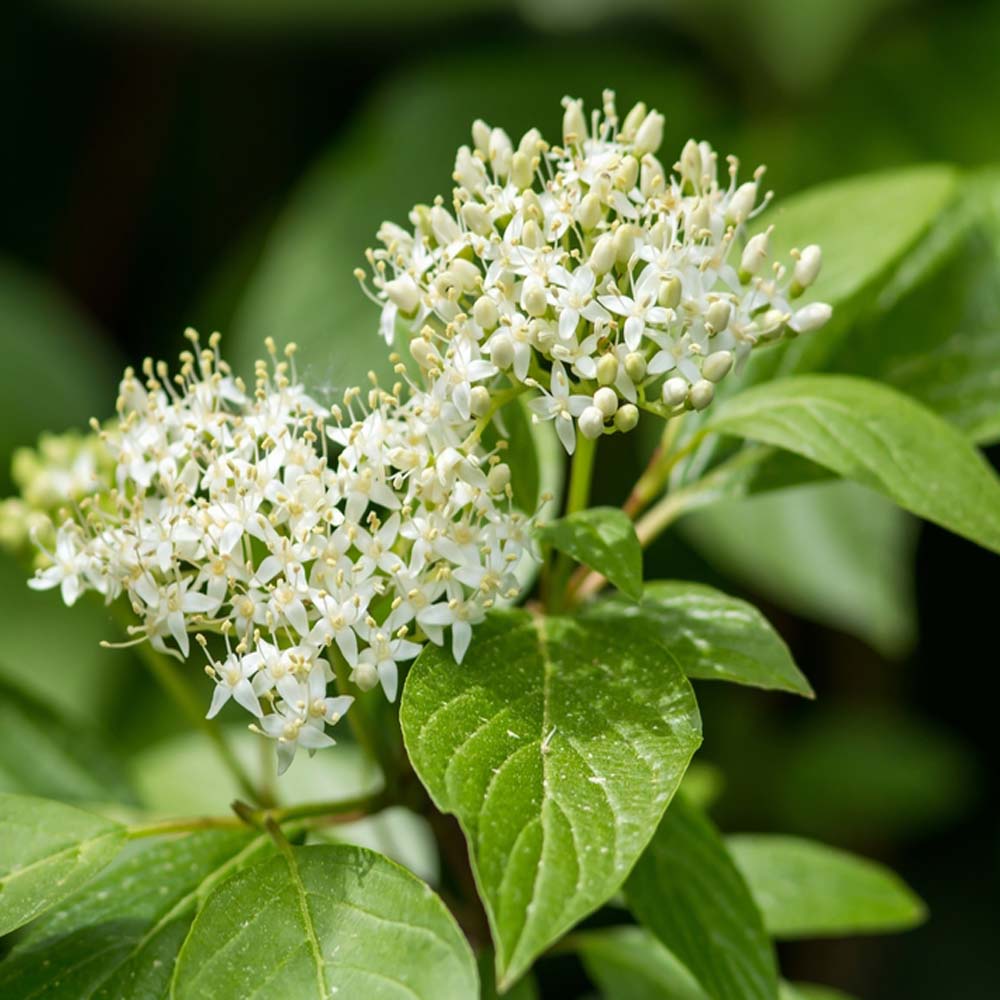
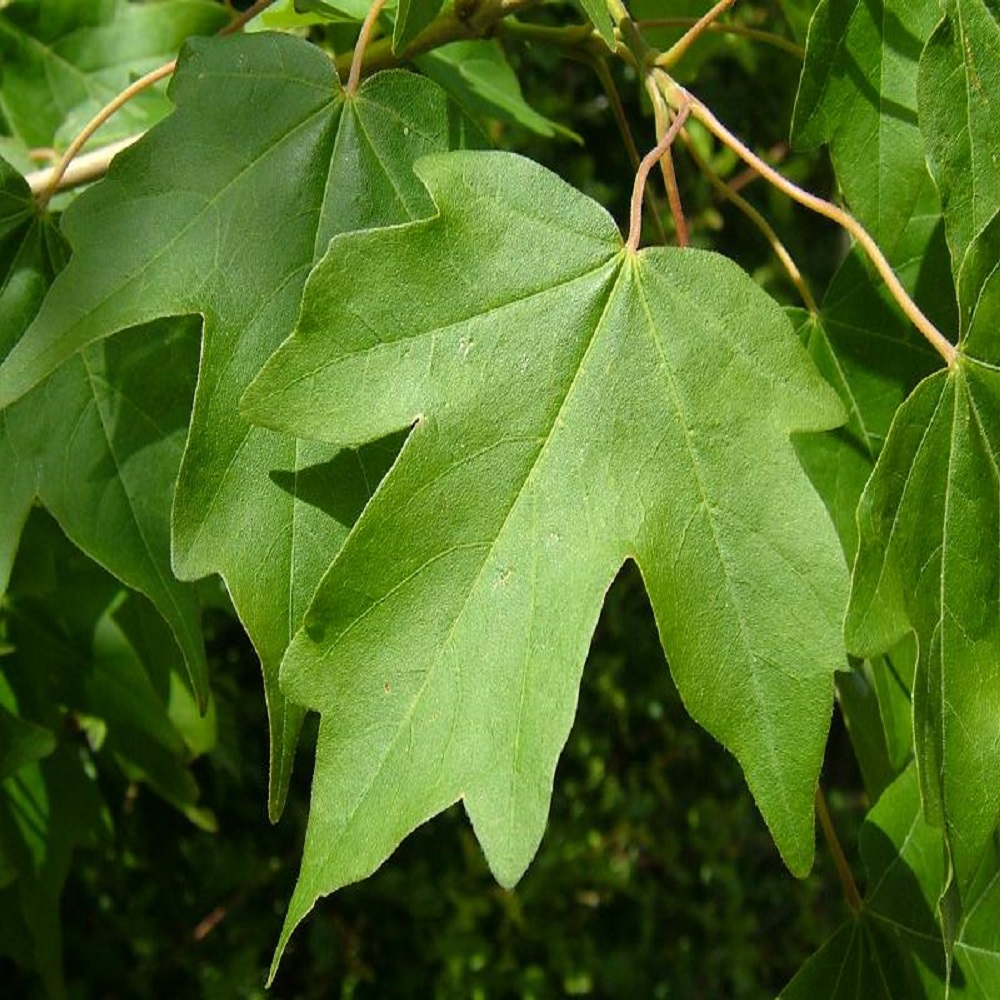
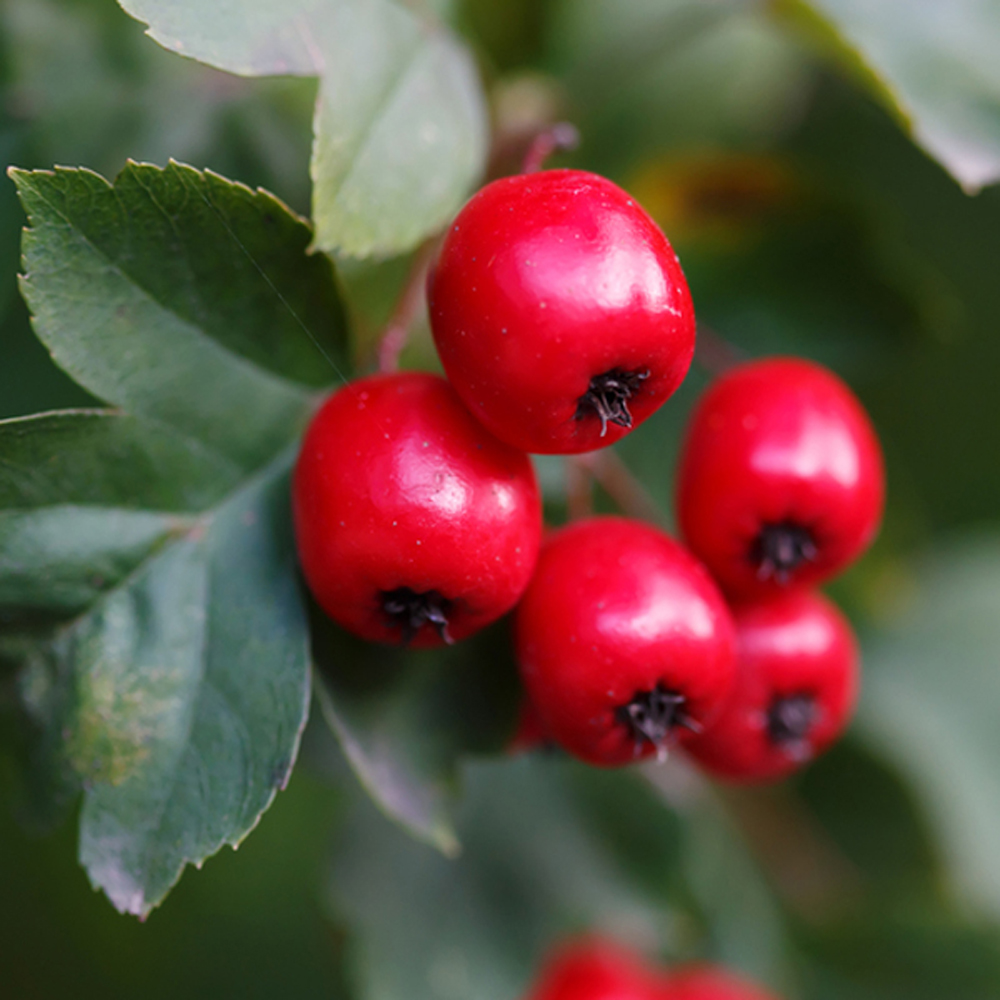
Blackthorn (Prunus spinosa). Also known as Sloe bush, Blackthorn produces small white flowers in early spring, before its green, oval leaves appear.
Hazel (Corlyus avellana). A small, native tree often seen in British hedgerows. It’s commonly coppiced and grown for its edible hazelnuts, which appear in autumn.
Dog rose (Rosa canina). A fast-growing, native rose plant that is a common sight in British hedgerows.
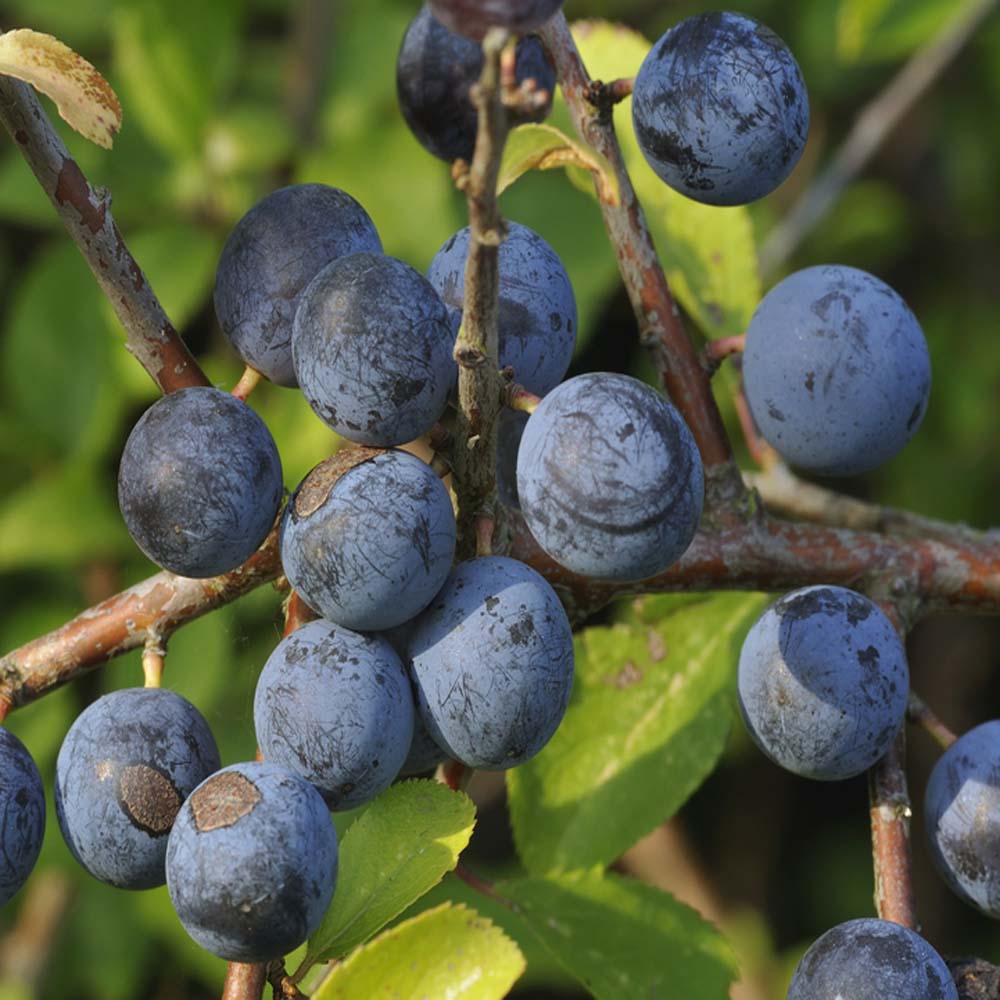
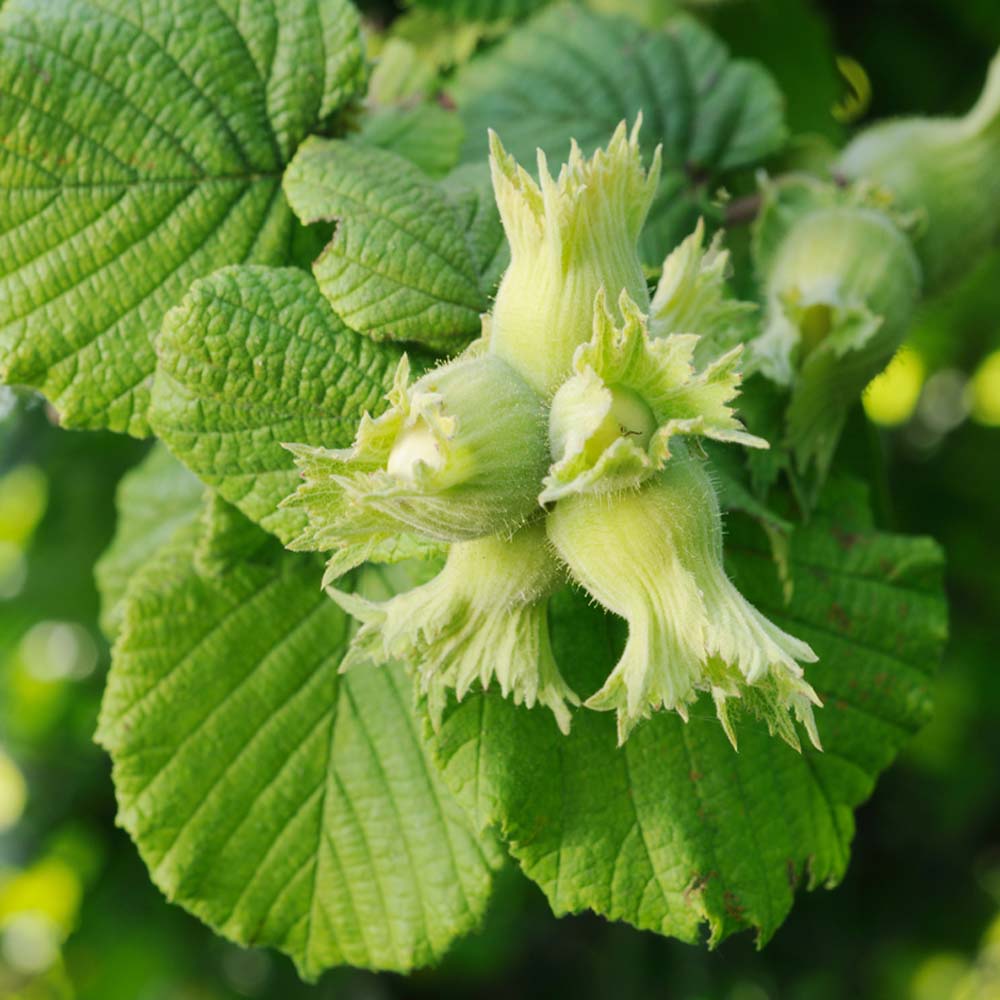
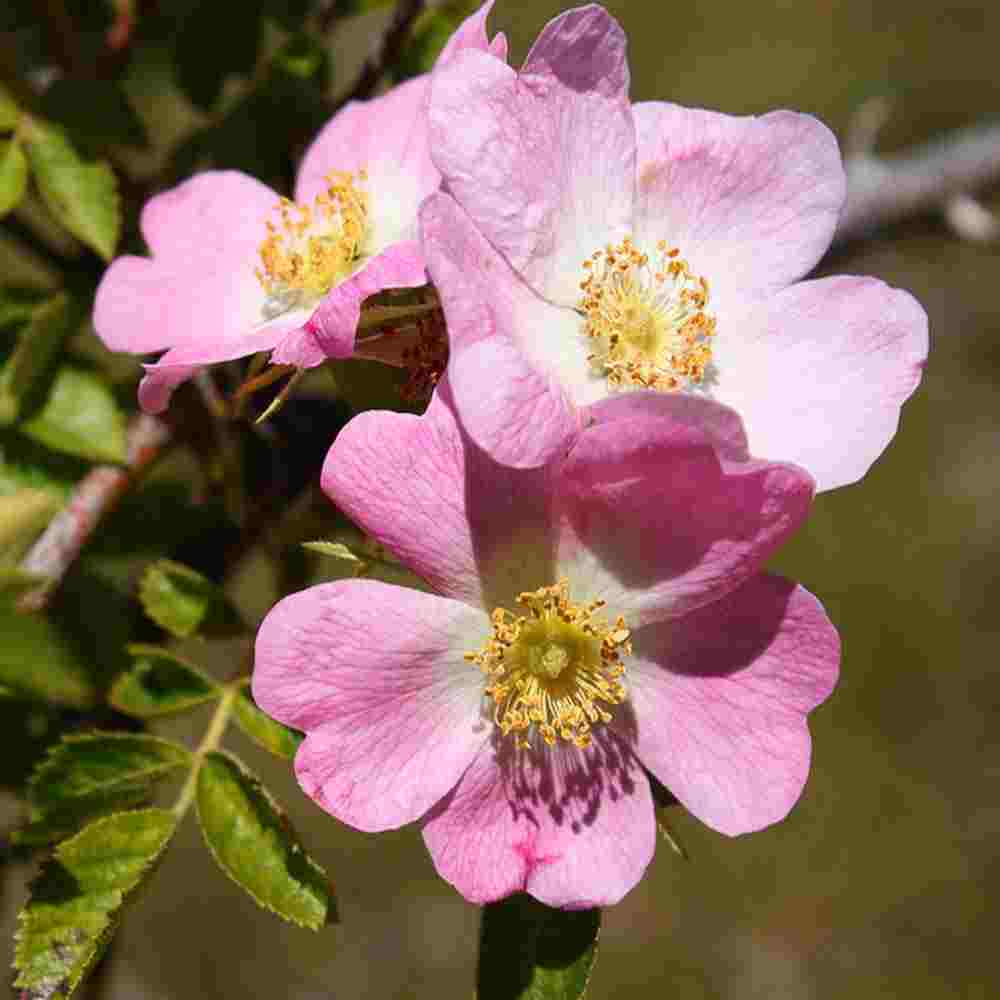
1. Tree Planting: Is Autumn a good time to plant?
2. Tree Planting Tips: How to correctly install your trees
3. Tree Planting: When should you plant bare root and rootball trees?
4. Bare Root: How do you plant a bare root tree?
5. A Guide to Planting Bare Root Hedging
Screening trees are an excellent way to create natural garden privacy. They block unwanted views at heights that fences can’t reach, helping to screen off buildings, roads, or neighbouring windows.
Often fence panels are limited to a height of 1.8–2 metres (depending on local regulations). A 10-metre fence can cost £400 or more in materials alone, that is before you factor in post-crete, wood preservatives, security features and professional installation charges! Screening trees offer a more natural, long-term alternative that blends beautifully into the landscape.
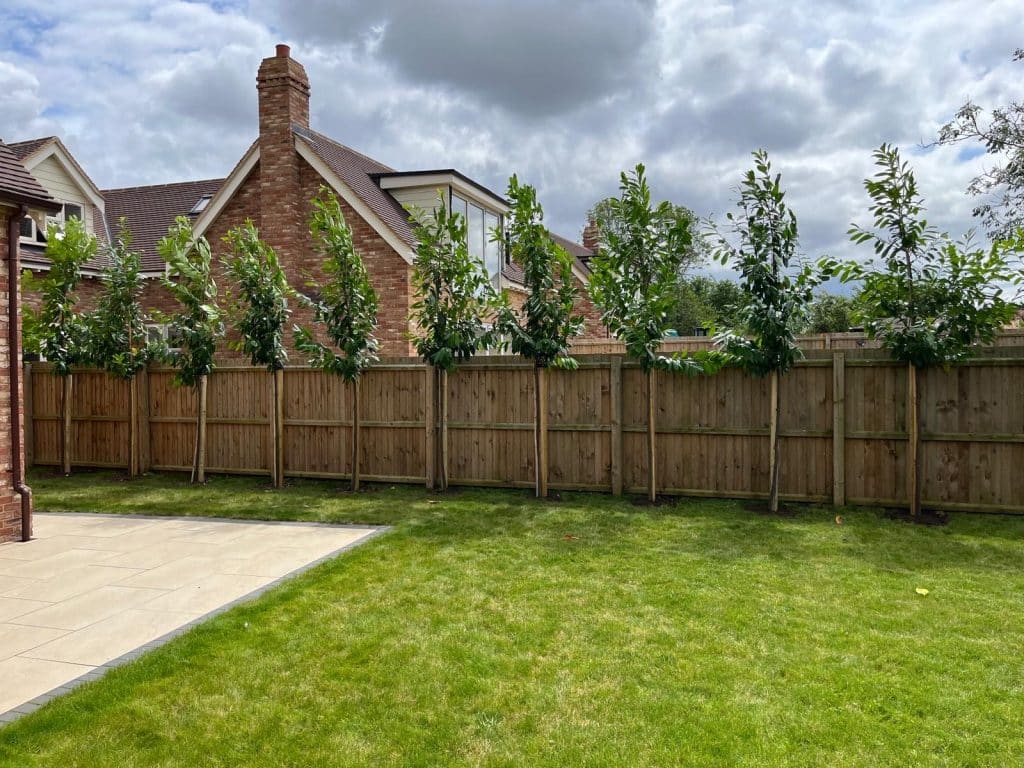
At King and Co, we offer a wide range of evergreen screening trees, including Photinia ‘Red Robin’, Cherry Laurel, Ligustrum and Magnolia. Usually standing at a height of 3m at installation, our screening trees grow taller than fences and help soften the view of unsightly new-build houses at the bottom of the garden. Check out some of our favourites below:
Photinia ‘Red Robin’ is famous for its new growth, which bursts forth in a stunning glossy red before gradually turning green. This fresh growth continues through spring and summer. To encourage a dense shape, prune it twice a year.
We offer Photinia ‘Red Robin’ in both standard tree and hedging plant form. The standard trees have a clear stem about 1.8m tall, making them ideal for raised hedges above the fence line. The hedging plants also work well to create privacy and screening. No matter the form, Photinia is a great choice to enhance gardens or boundaries year-round with its striking, vibrant colours.
Because many customers ask about using Photinia ‘Red Robin’ for screening, we’ve created a video with more information, view it here.
The cultivar King & Co favour is Prunus laurocerasus ‘Novita’. ‘Novita’ is proven to be hardier than its parent and is resistant to mildew and “shot hole” disease, which can stunt growth. Like other cultivars, it produces black berries that many birds enjoy.
Like Photinia, Cherry Laurel is available as a screening tree or hedging plant. Both forms work well to enhance privacy and define borders. The trees are especially good for screening above a fence line. When planted 1.2–1.5 metres apart, they create an uninterrupted raised hedge. If you only need one tree, it can be placed strategically to block a specific unsightly view.
Both the trees and hedging plants can be clipped regularly to maintain a neat shape or left to grow naturally. Laurel can also be trained onto frames as pleached trees, ideal for those who prefer a formal appearance.
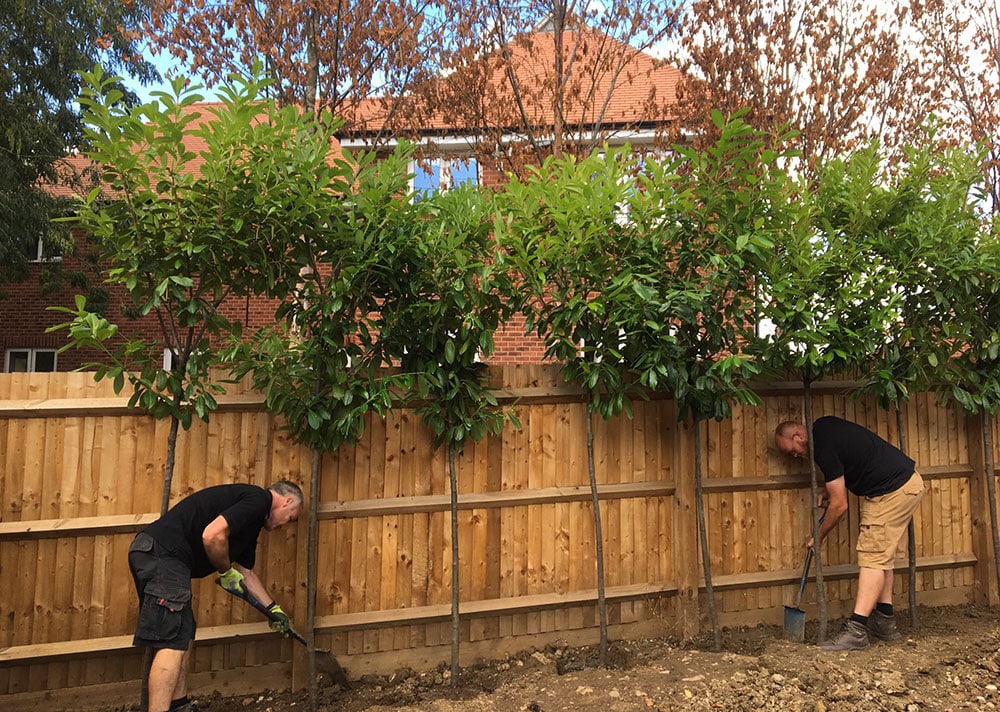
Chinese Privet (Ligustrum) is a great screening tree for smaller gardens. This small, semi-evergreen tree has glossy pale green and cream variegated leaves. It produces white flower panicles in late summer, which complement period homes beautifully. Chinese Privet can be clipped to stay compact or left to grow naturally.
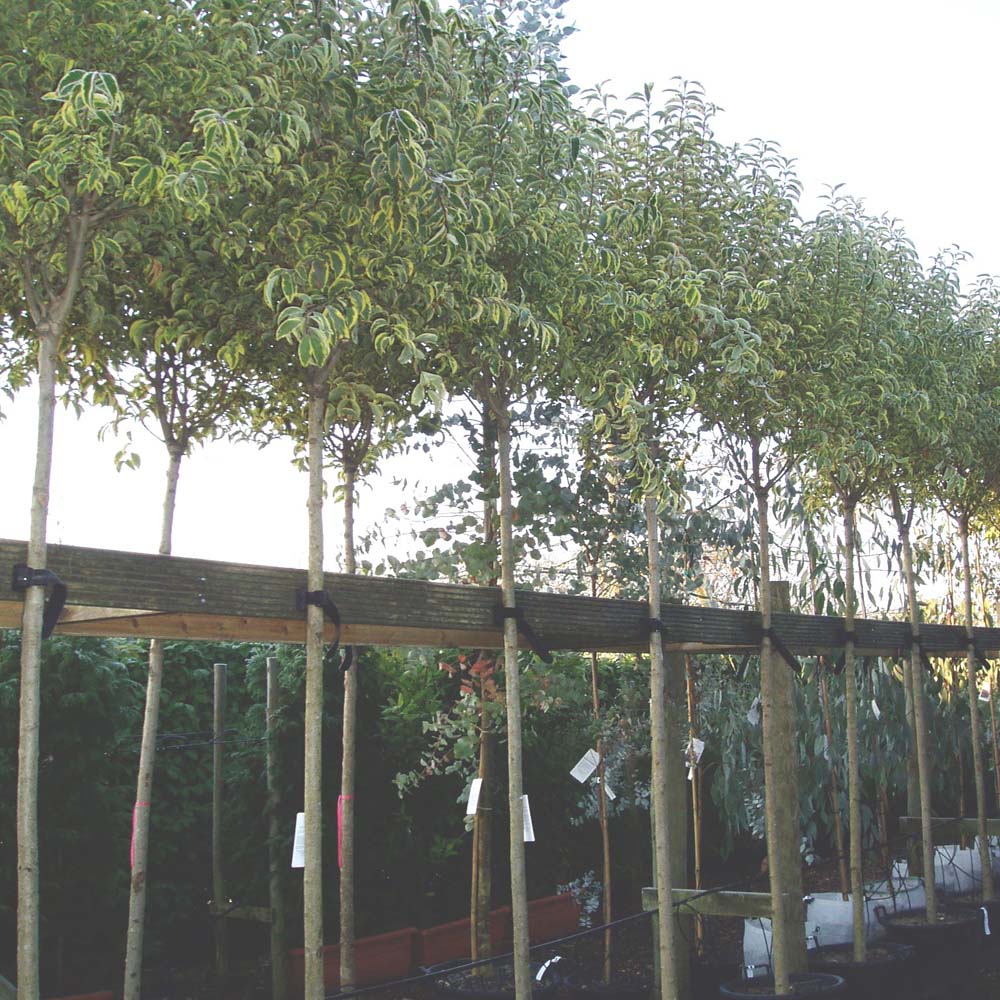
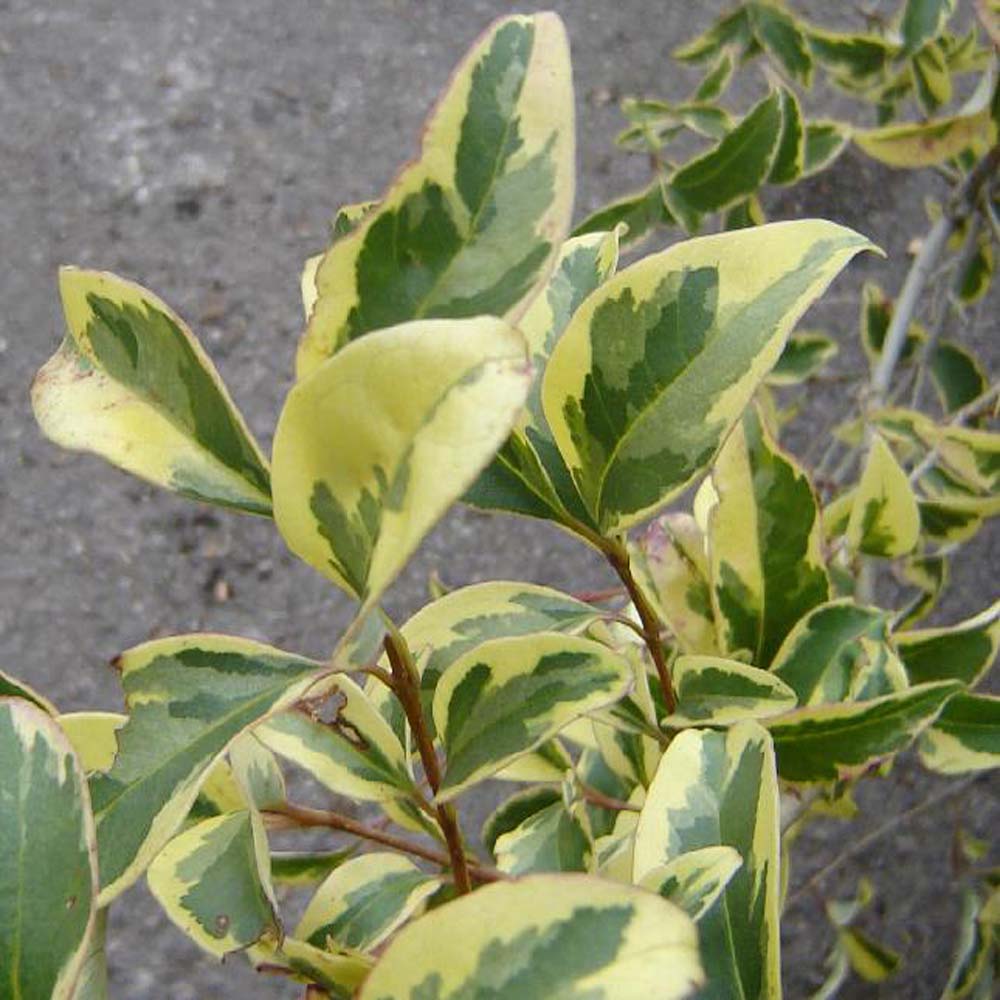
When people hear “Magnolia”, they often picture a deciduous, dense shrub. But it’s also available as a standard tree with a 2m clear stem. Magnolia grandiflora features large, cream, saucer-shaped flowers with dark purple stamens and a light, sweet scent. It puts on a stunning display from summer into autumn. This hardy evergreen keeps its foliage all year, making it a great choice for screening. In a sunny, sheltered spot, it will grow into a medium to large tree. With regular pruning, you can keep it compact and dense, perfect for privacy.
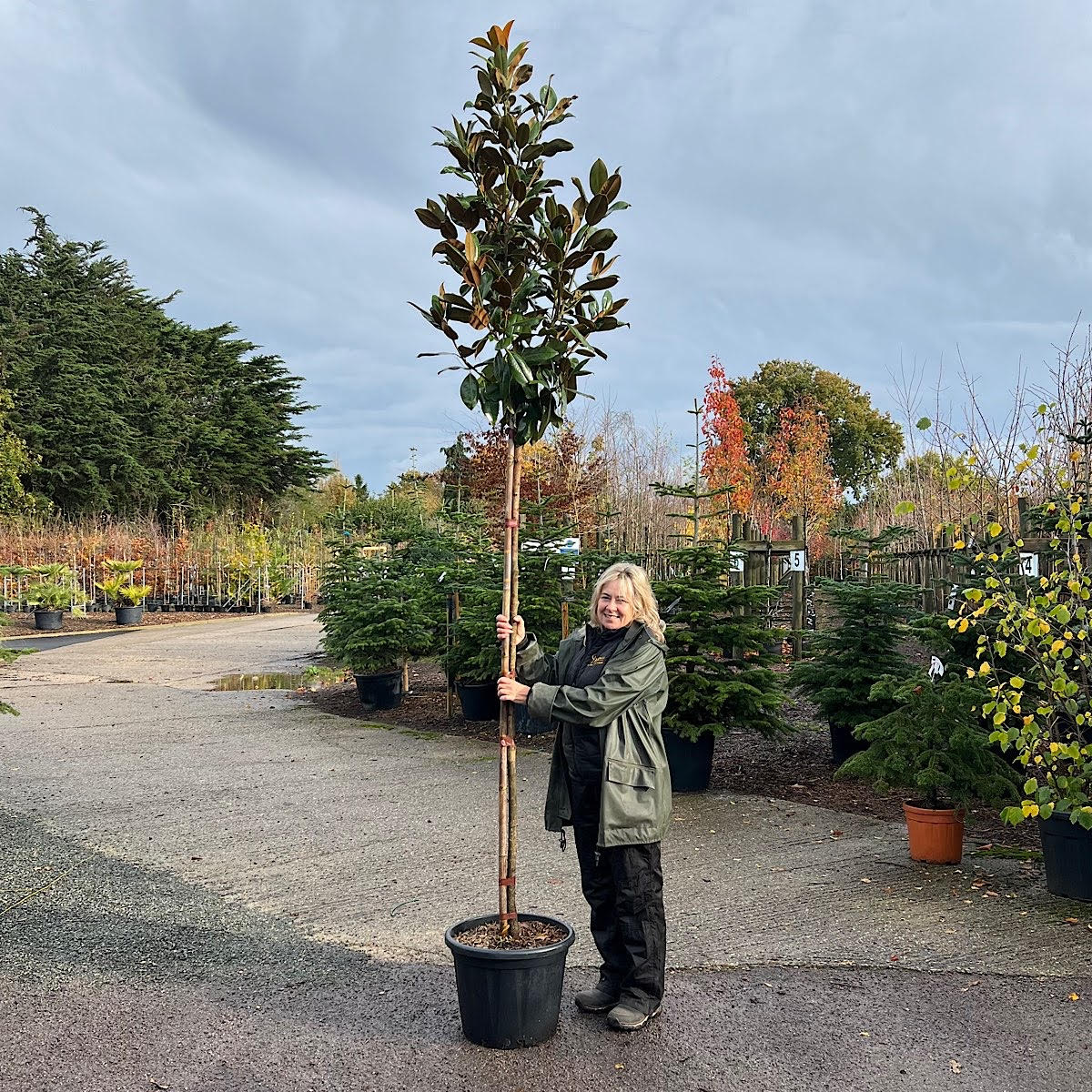
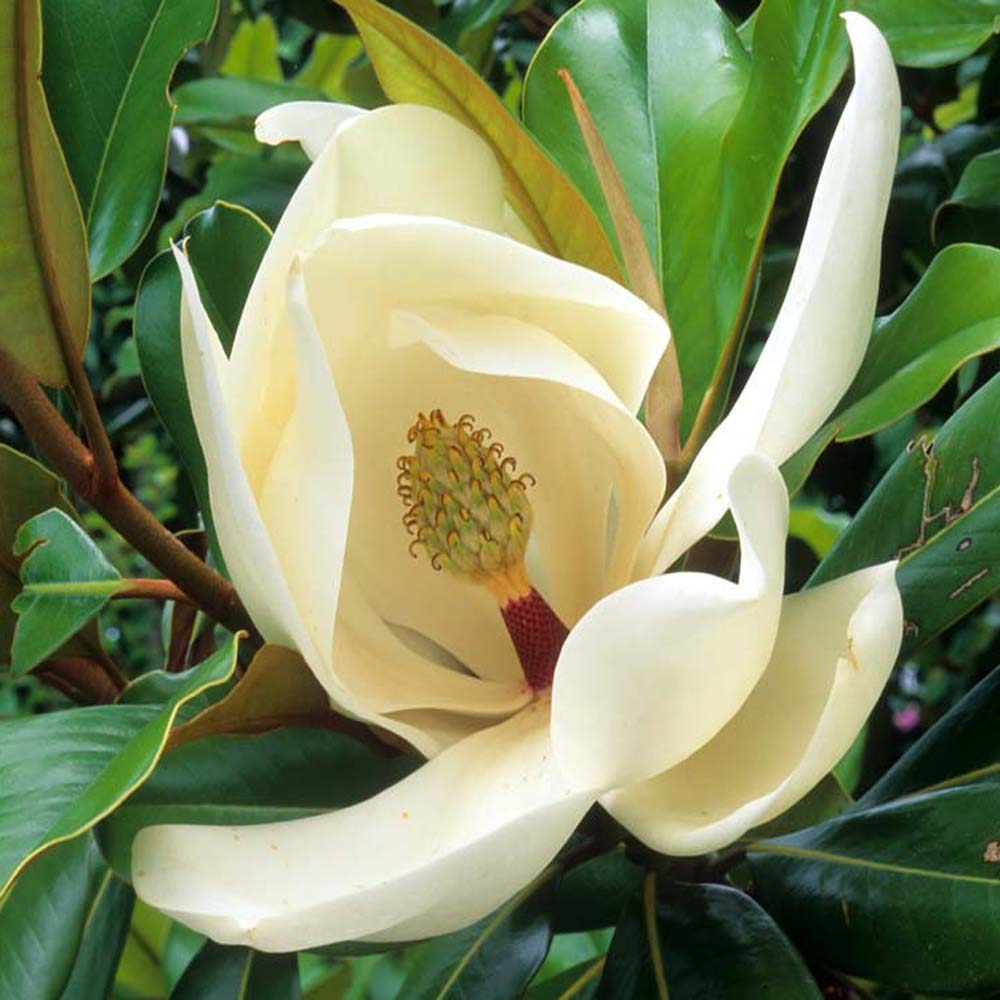
Japanese Privet is an excellent screening tree for smaller gardens. You can clip it to keep it compact, so it creates privacy without taking over your space. It grows well in well-drained soil and prefers a sunny position. For an effective evergreen screen, plant trees 1 metre apart. The screen should fill out within 2 to 3 years.
Hornbeam isn’t evergreen, but it makes up for that with a striking seasonal display. Fresh green leaves emerge in spring, turning golden yellow and orange in autumn. Its upright form adds structure and formality to gardens, avenues, and urban spaces. Hornbeam also holds onto its dead leaves well into winter, offering some screening even when bare. It’s also a great choice for clay soils, making it ideal for areas like Essex.
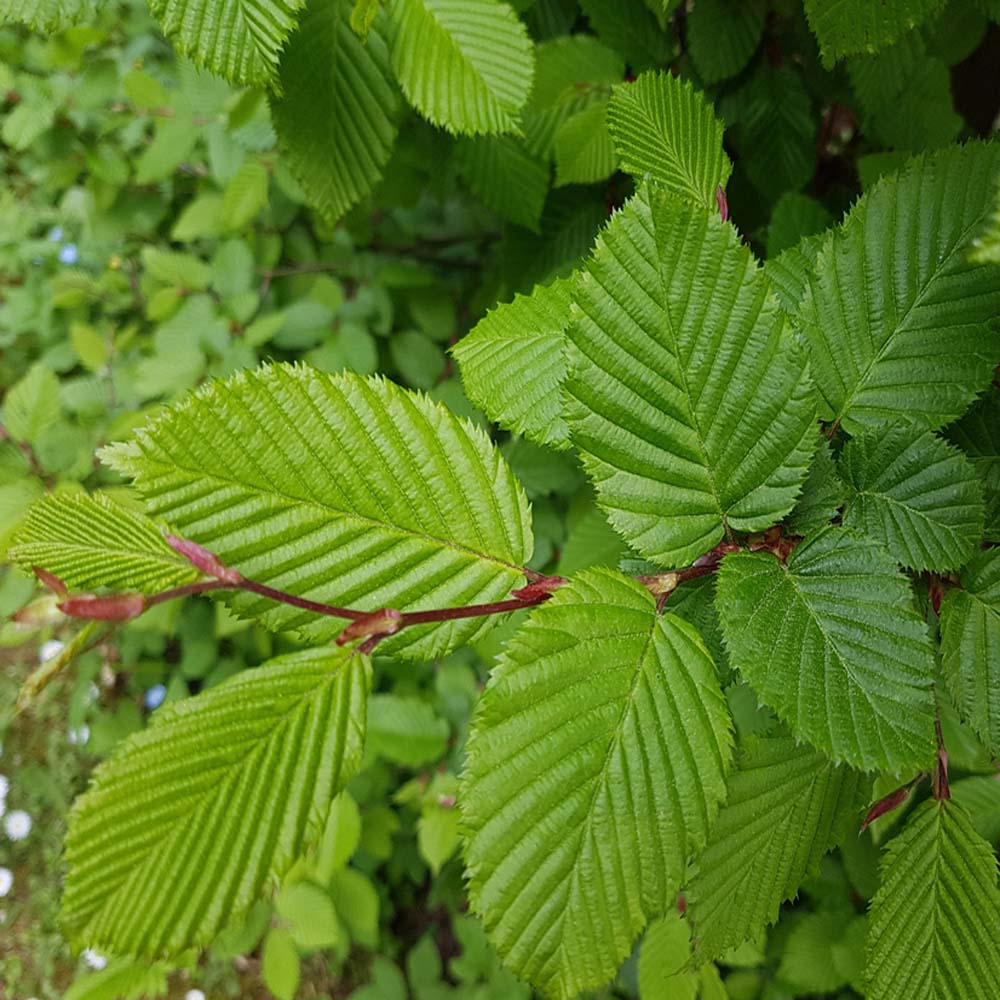
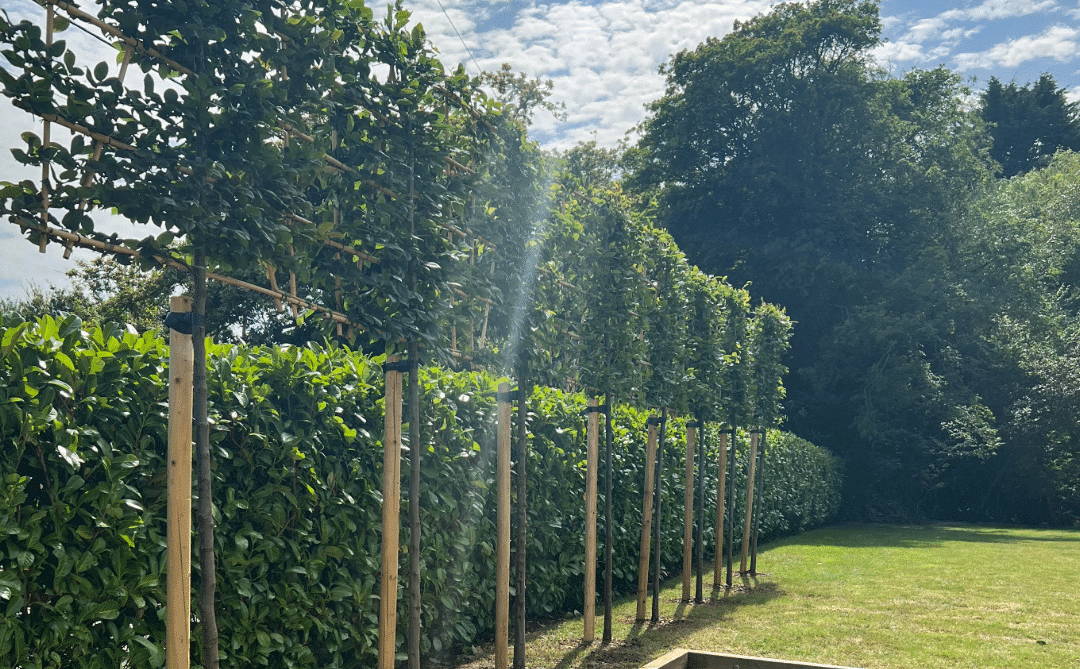
1. Tree Care Tips: How to plant, water and maintain your trees
2. Pleached Photinia Red Robin: A Stunning Screening Solution
3. What trees are best for new build gardens?
4. Our Guide to Pleached Trees
5. Visit Our Nursery to Pick your Own Trees!
We start accepting pre-orders for bare root hedging plants in September or October. To pre-order, simply email our sales team with your requirements. We’ll provide a quote based on the quantity you need and add you to our contact board to keep you informed when the plants are ready. The bare root season usually runs from November to March, but start dates can vary depending on temperature, as the plants must be fully dormant before lifting.
Bare Root plants are grown in a field and then lifted without soil around their roots during the dormancy period. They are then graded ready for transport and planting.
Bare root plants are usually considered most cost-effective option because they need less labour and fewer materials to produce. Since they come without soil on the roots, they are also lightweight and easy to transport. This helps to keep costs down too.
If you want to plant a native hedge and don’t mind waiting for it to grow, it’s best to plant during the dormant season. You can then use bare root plants that cost just a few pence each, instead of paying several pounds for container grown ones.
Common dogwood (Cornus sanguinea). A fast-growing, medium-sized deciduous shrub found in many British hedgerows. It offers year-round interest with white spring flowers, rich autumn leaf colour, and colourful winter stems. Common dogwood grows well in most soils and thrives in damp or heavy ground, making it ideal for wetter sites.
Field maple (Acer campestre). A tough, native deciduous species often found in British hedgerows. It’s ideal for mixed planting schemes, thanks to its vibrant gold and red autumn colour. Field Maple is hardy, reliable, and adds seasonal interest throughout the year.
Hawthorn (Crataegus monogyna). Also known as Quickthorn (or May Blossom), this is a fast-growing, native deciduous tree long used for hedging and field boundaries. It produces fragrant white flowers in late spring, just as its small, green, maple-like leaves appear. In autumn, it develops dark red berries that are highly valued by wildlife. Hawthorn responds well to clipping and quickly forms a dense, tidy hedge. Its sharp thorns make it an excellent choice for a secure, defensive boundary.

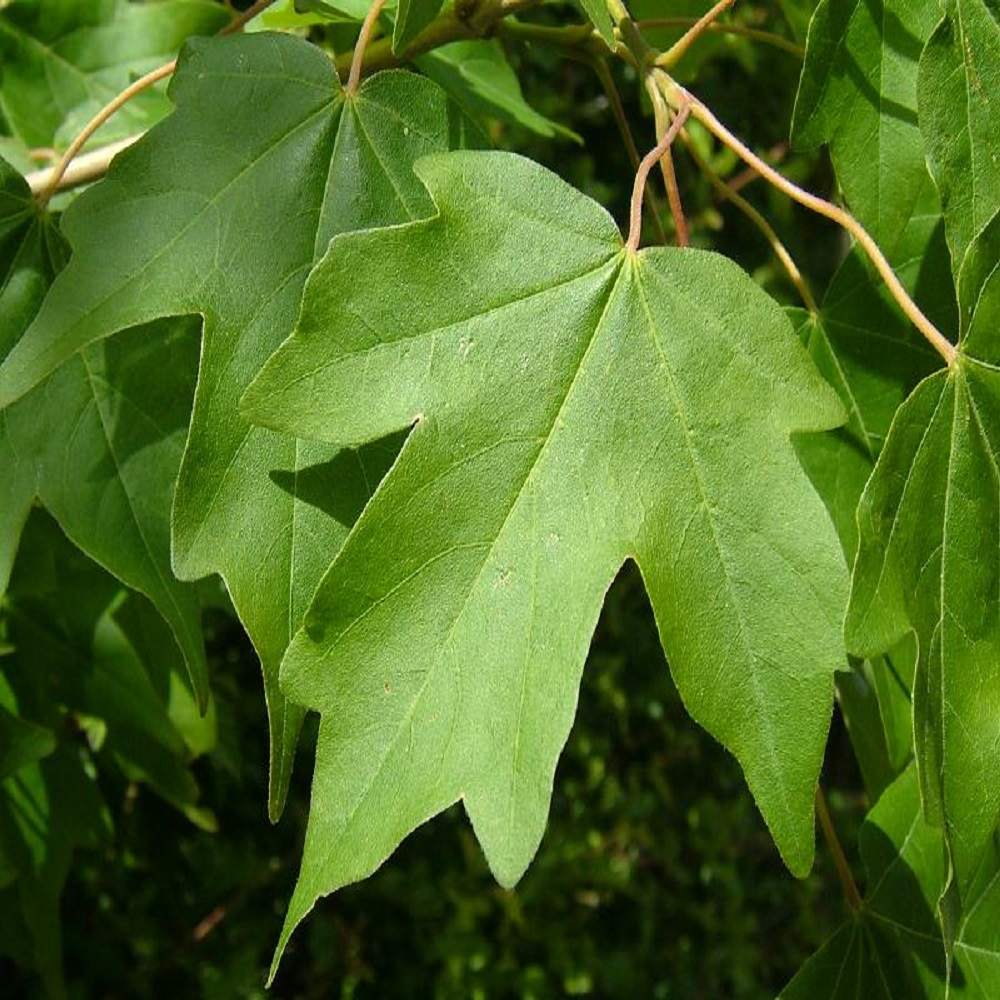

Blackthorn (Prunus spinosa). A tough, native deciduous shrub often used in hedgerows. It produces masses of small white flowers in early spring, before the oval-shaped green leaves emerge. In autumn, it bears clusters of blue-black edible berries called sloes, while the leaves turn yellow before dropping late in the year. Blackthorn has very hard, sharp thorns, making it ideal for a dense, defensive hedge when regularly clipped.
Hazel (Corlyus avellana). A small native tree commonly seen in British hedgerows. It’s often coppiced and valued for its edible nuts, known as hazelnuts, which appear in abundance in autumn. Hazel has large, round, bright green leaves held on upright stems with pendulous tips. It produces long, yellow catkins very early in spring, adding colour before most trees come into leaf. When cut back, it grows as a multi-stemmed tree, making it excellent for filling gaps and adding structure in a mixed hedge.
Dog rose (Rosa canina). A fast-growing native shrub often found in British hedgerows. It produces large, fragrant pink or white flowers in spring, followed by bright red hips in autumn. Its long, arching stems are covered in sharp thorns, making it an effective barrier against intruders. Dog Rose is also excellent for attracting wildlife, offering food and shelter for birds and insects throughout the year.


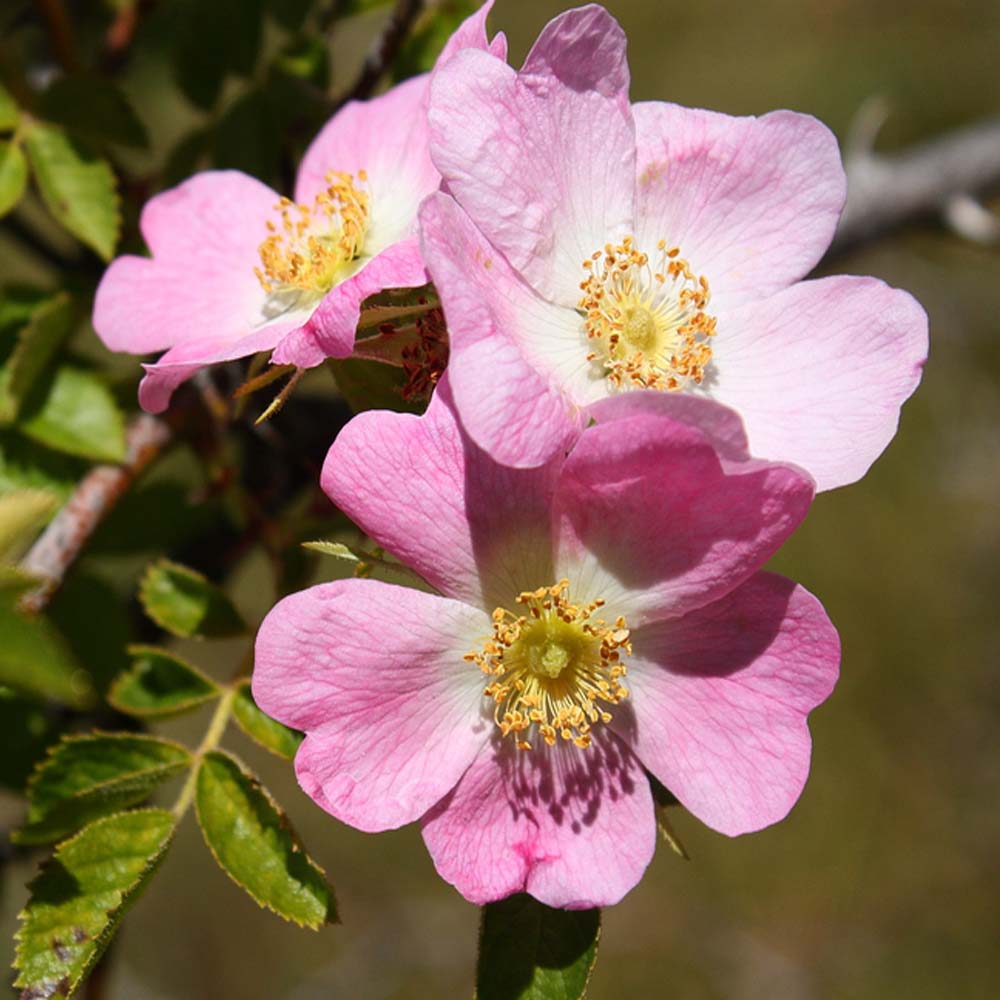
Establishing a bare root hedge in your garden may seem daunting to the uninitiated, but by following a few simple rules, success is nearly always guaranteed.
1 – If you don’t intend to set the hedge immediately upon arrival, store the plants in a cool, frost-free shed or garage.
2 – When planting out, do not remove the hedging plants from the box or bag. Exposure to sun or drying winds may lead to root desiccation and eventual failure.
3 – Do not dig huge planting pits that require laborious backfilling. If the soil is reasonably good, use the notch planting technique. Push your spade 4-6” into the ground, open up a wide slit and place the root in at the nursery soil mark.
4 – Be sure to ‘heel in’ very tight. This is most important to ensure good root/soil contact. After heeling in, you should have to tug the plant quite hard to remove it.
5 – After completion of planting, mulch the hedge with either; plastic, woodchips or similar to trap moisture in, and prevent growth of weed competition.
Pre-order your bare root plants as soon as possible to jump to the front of the delivery queue! Securing your order early also guarantees the best selection of species and a head start on the growing season.
1. Tree Planting: Is Autumn a good time to plant?
2. Tree Planting Tips: How to correctly install your trees
3. Tree Planting: When should you plant bare root and rootball trees?
You can buy trees, hedging, shrubs and topiary online by browsing our website.
If you do not see a plant or size that is suitable for you then please call as we stock a wide variety of plants in our tree nursery. It’s worth noting that many other websites sell other people’s stock (i.e. they act as an agent) so you cannot view the products at their own site. At King & Co, all of our advertised plants are available for viewing at our tree nursery in Rayne, near Braintree, situated just over an hours drive out of London.
Our knowledgeable and experienced tree nursery staff are always contactable via phone on 01376 340469 or if you have any questions regarding any of our trees or accessories.
If you cannot see what you require on our website, please complete the enquiry form. We will give it our urgent attention and will get back to you shortly with a solution that meets your needs.
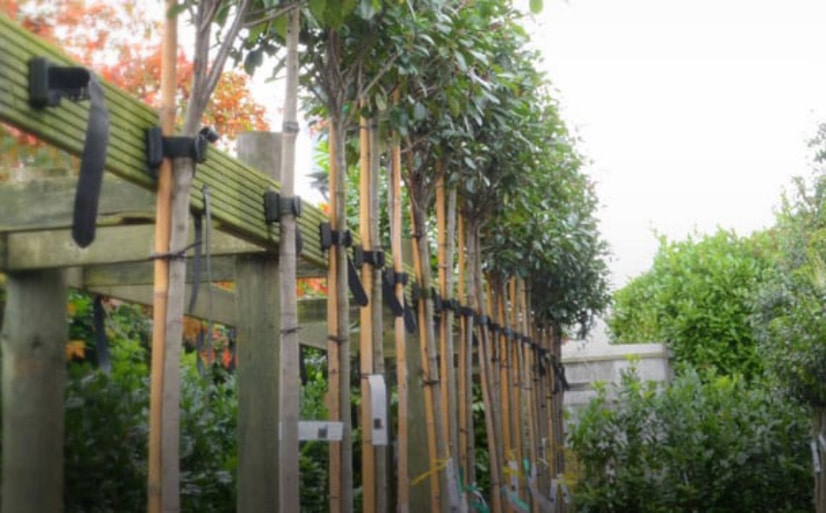
If you are looking for specific evergreen trees, Photinia, Leylandii hedging, Leylandii trees, instant hedging or shrubs, use the search bar at the top of the page